Last Minute
All Inclusive
Tylko u nas
Dla seniorów
Wycieczki objazdowe
Dojazd własny

Polecane kierunki
Opinie o hotelach
Opinie o biurach podróży
Popularne hotele
Side Premium by OZ Hotels
Albatros Sea World Resort Marsa Alam
Gypsophila Holiday Village
Long Beach Resort
Salamis Bay Conti
Albatros Jungle Aqua Park
Serra Palace
Gdzie na wakacje?
Płatności odroczone i raty
Ubezpieczenie
Bony Wakacje.pl
Wyjazdy grupowe
Internet na wakacje
Wycieczki fakultatywne
Lot + Hotel
Najniższa cena z ost. 30 dni
przed obniżką:
18697 zł/os.

37 394 zł
W krainie gejsz i samurajów.
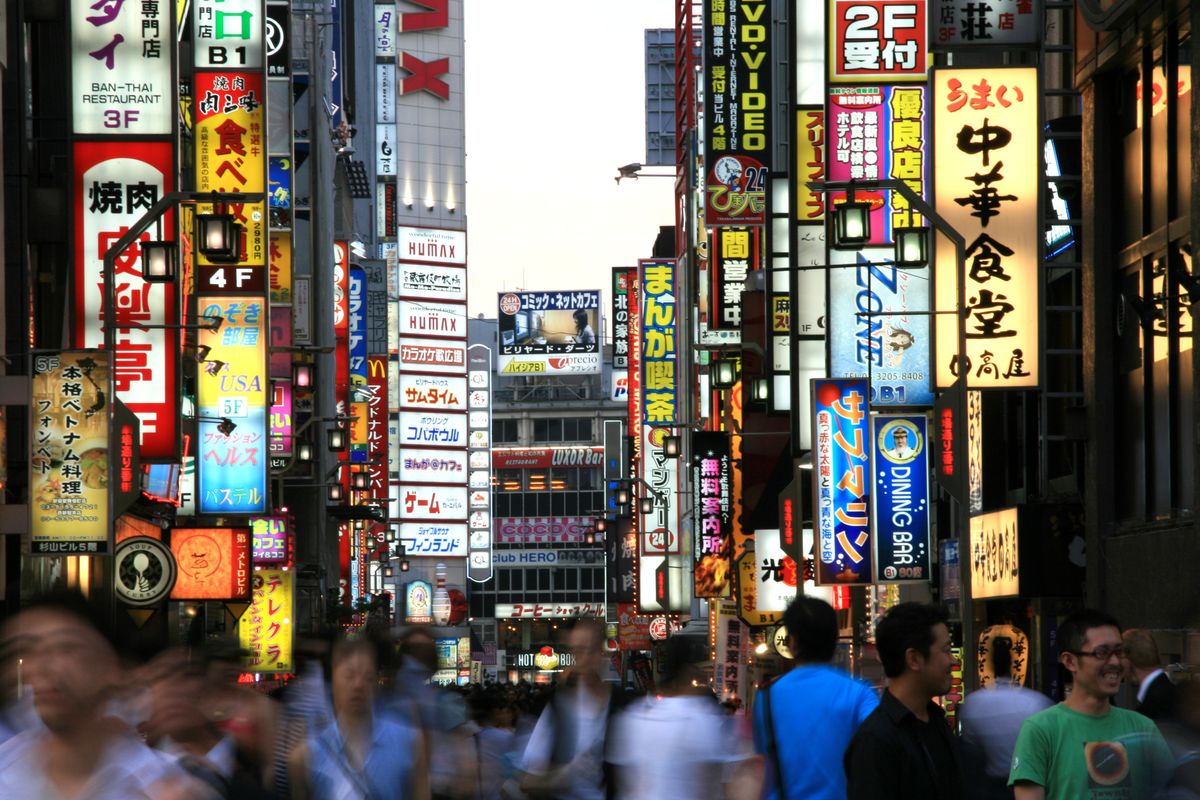
Opis oferty
Zakwaterowanie.
Hotele dobrej klasy - (razem 10 lub 11 rozpoczętych dób hotelowych).
Pokoje: 2 - osobowe, we wszystkich hotelach są wyposażone w łazienki z wc i często telewizor. Uwaga! W większości hoteli dostępne wyłacznie łóżka typu twin. Niektóre hotele nie posiadają dostawek lub mają ich ograniczoną liczbę - wówczas 3 osoby mogą być kwaterowane w 2 osobnych pokojach. W Atami dostawki są wyłącznie w formie futonu.
Zbiórka na lotnisku im. F. Chopina, Warszawa - stanowisko Rainbow znajduje się w strefie Biura Podróży", w łączniku pomiędzy strefą B a C lotniska (vis a vis sklepu "Virgin"). Aktualne rozkłady prosimy sprawdzać na stronie operatora. Przelot do Tokio samolotem rejsowym (bez przesiadki).
Przylot do Tokio, odprawa paszportowo - celna. Zakwaterowanie w hotelu w Tokio. Wizyta w dzielnicy Shibuya, gdzie zobaczymy najbardziej ruchliwe przejście dla pieszych oraz pomnik psa Hachiko (w przypadku późnego przylotu ten punkt wycieczkirealizowany jest w dniu 3.)
Po śniadaniu całodzienne zwiedzanie Tokio. Rozpoczniemy od wizyty na dziedzińcu przed Pałacem Cesarskim, siedzibą władcy Japonii. Zespół pałacowy znany był niegdyś jako Zamek Edo i stanowił rezydencję szogunów. Zobaczymy świątynię Meiji Jingu, poświęconą dawnej parze cesarskiej. Obiekt położony jest w malowniczym otoczeniu rozległego wiecznie zielonego lasu. Odwiedzimy również świątynię Asakusa z okresu Edo, jeden z najważniejszych obiektów shintoistycznych oraz pasaż handlowy Akamise, gdzie można zakupić pamiątki i skosztować miejscowych specjałów. Przejazd obok wieży Tokio Sky Tree. Powrót na nocleg. Wieczorem kolacja w lokalnej restauracji. Dla chętnych wycieczka Tokio Nocą (za dodatkową opłatą ok.4 000 JPY/os.): przejazd do dzielnicy Shinjuku – głównego centrum biznesowego Tokio. Wjazd na taras widokowy Tokyo Metropolitan Government Building, skąd będziemy podziwiać panoramę miasta. Następnie spacer po dzielnicy czerwonych latarni.
Śniadanie w hotelu, następnie wycieczka pociągiem do Kamakura, miasta położonego 50 km na południowy zachód od Tokio, które było siedzibą rządu w okresie XII - XIV w. Zobaczymy tu najważniejszy zabytek miasta - posąg Wielkiego Buddy, wysoki na ponad 13 m i wykonany z brązu oraz świątynie Hase i Tsurugaoka Hachimangu. Na koniec spacer po handlowej ulicy Komachi. Po południu powrót koleją do Tokio. (Trasa ok. 100 km).
Po śniadaniu wykwaterowanie.
Uwaga! Na dzień 5 i 6 należy spakować torbę podręczną lub małą walizkę kabinową. Dostęp do bagażu głównego będzie możliwy dopiero po zakwaterowaniu w hotelu w Kioto.
Przejazd na wulkan Fuji, symbol Japonii. Jeśli warunki pogodowe pozwolą, wjedziemy tu na piątą stację (ok. 2300 m n.p. m.). Następnie kolejką linową dostaniemy się do wysoko położonej wulkanicznej doliny Owakudani, znanej z gorących źródeł, fumaroli siarkowych i wrzących stawów. Przejazd do Atami. Kolacja i nocleg w kurorcie nadmorskim słynącym z łaźni japońskich, z których chętni będą mogli skorzystać w godzinach wieczornych. Uwaga! W przypadku zwiększonej aktywności sejsmicznej w regionie lub niekorzystnych warunków atmosferycznych, zamiast doliny Owakudani realizowany jest program alternatywny: kolejką linową dostaniemy się na górę Kachi Kachi Yama, gdzie znajduje się punkt widokowy oferujący najlepszą panoramę okolicy (kolejka linowa czynna w zależności od warunków atmosferycznych). (Trasa ok. 190 km).
Śniadanie i wyjazd z Atami. Podróż superszybkim pociągiem Shinkansen do Shizuoki, a następnie do Kioto. Przejazd autokarem do Nary. Zwiedzimy świątynię Todaiji z największym drewnianym budynkiem świata (Pawilon Wielkiego Buddy), a także obejrzymy świątynię Kasuga z VII w. i przyległy do niej park z jeleniami. Nocleg w okolicach Kioto. Kolacja w lokalnej restauracji. (Trasa ok. 460 km).
Po śniadaniu całodniowe zwiedzanie Kioto. Zobaczymy Złoty Pawilon z listy UNESCO - położoną w parku świątynię zen, której ściany pokryte są płatkami złota. Po południu czeka nas wizyta w kompleksie zamkowym Nijo orazpagodzie Heian z jedną z największych bram świątynnych - torii w Japonii, a także weźmiemy udział w tradycyjnej ceremonii parzenia herbaty. Obejrzymy górujący nad miastem buddyjski kompleks świątynny Kiyomizu (UNESCO) składający się z kilku drewnianych pawilonów. Galerie widokowe oferują wspaniałą panoramę Kioto. Popołudnie zakończymy spacerem w dzielnicy gejsz - Gion. Powrót do hotelu na nocleg.
Śniadanie w hotelu.
Uwaga! Na dzień 8 i 9 należy spakować torbę podręczną lub małą walizkę kabinową. Dostęp do bagażu głównego będzie możliwy dopiero po zakwaterowaniu w hotelu w Okayamie.
Przejazd szybkim pociągiem do Hiroszimy i transfer na wyspę Miyajima, gdzie zwiedzimy świątynię Itsukushima (UNESCO) ze słynną tori wznoszącą się z wody - miejsce to zaliczane jest do trzech najsłynniejszych widoków Japonii. Następnie zwiedzanie Hiroszimy - Park Pokoju z listy UNESCO z Kopułą Bomby Atomowej oraz Muzeum Bomby Atomowej. Przejazd do hotelu w okolicach Hiroshimy. Wieczorem kolacja w lokalnej restauracji (będzie okazja skosztowania tradycyjnej japońskiej potrawy okonomiyaki). (Trasa ok. 420 km).
Po śniadaniu transfer autokarem do Okayamy. Zwiedzanie Zamku Wron, który swą nazwę zawdzięcza czarnym elewacjom. We wnętrzach zamku zobaczymy aktualną ekspozycję (zazwyczaj związaną z tradycją i kulturą japońską). Na zakończenie spacer po ogrodzie Korakuen, jednym z najpiękniejszych w Japonii, zaprojektowanym w tradycyjnym stylu. Zakwaterowanie w hotelu w Okayamie lub okolicy. Dla chętnych za dodatkową opłatą (ok.8 000JPY/os.) przejazd do Kurashiki. Spacer w dawnej dzielnicy samurajów Bikan, słynącej z dobrze zachowanej drewnianej architektury z XVII w. oraz sieci kanałów, w których pływają karpie koi. Wizyta w zabytkowym domu samurajskim rodu Ohashi. Następnie powrót do Okayamy. (Trasa ok. 160 km).
Śniadanie. Przejazd do Marugame, słynącego z wyrobu tradycyjnych wachlarzy Uchiwa. (Uwaga! W niektórych terminach z technikami produkcji i zdobienia wachlarzy zapoznamy się w Kioto zamiast wizyty w Marugame). Następnie przejazd do zamku Himeji (lista UNESCO). Zamek Białej Czapli jest jedną z najstarszych japońskich budowli, które dotrwały do naszych czasów. Prowadzący do fortecy labirynt ścieżek oraz tradycyjna architektura japońska sprawiają, że jest jednym z najatrakcyjniejszych turystycznie obiektów tego typu. W miarę możliwości zwiedzimy również przylegający do niego ogród Kokoen. Po południu przejazd do Osaki i zakwaterowanie w hotelu. (Trasa ok. 280 km).
Po śniadaniu przejazd do Kobe, słynącego z produkcji Sake. Zwiedzimy jedną z wytwórni tego znanego na całym świecie japońskiego trunku. Następnie udamy się na zwiedzanie Osaki. W programie nowoczesna dzielnica Dotonbori, pełna barwnych neonów, klubów karaoke, restauracji i centrów handlowych oraz punkt widokowy na wieżowcu Umeda Sky Building. Na zakończenie wizyta na targu Kuromon, gdzie w lokalne specjały zaopatrują się nawet najlepsi kucharze z Osaki, znanej z wyśmienitej kuchni. Po południu przejazd szybkim pociągiem do Tokio (możliwa przesiadka). Uwaga! Przejazd pociągiem odbywa się bez dostępu do bagażu głównego, który transportowany jest autokarem – na ten dzień należy spakować torbę podręczną lub małą walizkę kabinową. Kolacja i nocleg w hotelu w okolicach Tokio. (Trasa ok. 560 km)
Po wczesnym śniadaniu transfer na lotnisko i wylot bezpośrednio do Warszawy (bez międzylądowania). W przypadku wieczornego wylotu, w tym dniu wycieczka fakultatywna do parku Uedo z Muzeum Narodowym i uliczką zakupową (cena ok. 5 000 YEN).
Dla grup nie podróżujących liniami LOT (rozkłady do sprawdzenia na stronie operatora), powyższy program ulega następującym modyfikacjom:
(...) Przelot do Tokio samolotem rejsowym z przesiadką w jednej ze stolic europejskich lub państw Płw. Arabskiego.
Dzień 2 - 10
(...) Obiadokolacja w lokalnej restauracji. Wieczorem czas wolny, a następnie transfer na lotnisko i wylot do Polski (z przesiadką).
Lądowanie w Warszawie.
Lądowanie w Polsce.
Uwagi do programu
• Kolejność realizacji punktów programu może ulec zmianie lub odwróceniu.
• Pilot nie oprowadza po obiektach muzealnych.
Świadczenia
Cena obejmuje: przelot samolotem rejsowym na trasie Warszawa-Tokio-Warszawa (bezpośrednio lub z przesiadką), zakwaterowanie w hotelach (9 lub 10 rozpoczętych dób hotelowych), przejazd szybkim pociągiem na trasie Atami - Kioto, Kioto - Hiroszima i Osaka - Tokio, transfery klimatyzowanym autokarem, wyżywienie wg programu, opiekę polskiego pilota i miejscowych przewodników, program turystyczny j.w., oraz ubezpieczenie TU Europa (NNW, KL i bagaż).
Cena nie obejmuje: kosztów biletów wstępu do zwiedzanych obiektów, wynagrodzenia lokalnych przewodników, napiwków dla kierowców i pozostałej obsługi (łącznie ok.36 000JPY/os., płatne pilotowi imprezy), zakupu wycieczek fakultatywnychwymienionych w programie, dodatkowych posiłków podczas wycieczki, napojów do posiłków oraz innych wydatków osobistych.
Paszport musi być ważny co najmniej 3 miesięce, licząc od daty zakończenia imprezy.
Obsługa grupy w systemie TOUR GUIDE. Jest to bezprzewodowy system oprowadzania grup, umożliwiający Klientowi wygodny sposób zwiedzania. Przeczytaj więcej o tour guide.
Telefony komórkoweW Japonii sieć telefonii komórkowej oparta jest na innym niż w Europie systemie (W-CDMA zamiast GSM). Z tego powodu polskie telefony mogą nie działać poprawnie - w celu uzyskania szczegółowych informacji prosimy o kontakt z Państwa operatorem telefonii komórkowej.
PłatnościWiększość sklepów i restauracji w Japonii przyjmuje płatność wyłącznie gotówką, bankomaty oraz płatności kartą nie są powszechne- polecamy zabrać ze sobą odpowiednią ilość gotówki.
Wizy - informacje dla sprzedawców
Paszport musi być ważny.
Szczególowe informacje dotyczące aktualnych procedur wjazdowych znajdują się pod adresem />
Opinie klientów
Klienci oceniają tę wycieczkę na 5.6/6. Sprawdź opinie: "
Meta description
Tokio - tradycja i nowoczesność Wulkan Fuji nocleg w tradycyjnej japońskiej gospodzie Złoty Pawilon i dzielnica gejsz w Kioto wizyta w wytwórni sake futurystyczna Osaka
Wybierz pokój i godziny lotów
Potrzebujesz kilku pokoi.
Sprawdź, jak zarezerwować.
Podział na pokoje
Powyżej wybierasz liczbę osób, które będą zakwaterowane w 1 pokoju (lub apartamencie, willi itd.). Wybierz jedną z ofert z listy i zarezerwuj ją. Zrób oddzielne rezerwacje dla każdego kolejnego pokoju lub skontaktuj się z nami, by złożyć zamówienie u naszego doradcy.
Maksymalna liczba uczestników
Jeśli nie możesz dodać kolejnych osób, osiągnąłeś(-aś) maksymalny limit dla 1 pokoju.
2 os. pokoj standardowy
2 dorosłych
Warto dokupić
Oficjalny parking lotniska p2, żwirki i wigury 1, warszawa, ubezpiecz podróż z axa assistance max wraz z kosztami rezygnacji.
naszych klientów decyduje się na zakup ubezpieczenia
zero ryzyka
Ubezpieczenie Kosztów Rezerwacji chroni Cię, jeśli zachorujesz na COVID-19
od 80 tys. do 8 mln €
kosztów leczenia zostanie pokrytych, jeśli zdarzy Ci się COVID-19 w trakcie wakacji
Cena całkowita
Kup od razu! Najlepsze pokoje szybko się wyprzedają.
Cudowna fantastyczna wycieczka. Wróciliśmy z mężem oczarowani kulturą i nasyceni widokami na dobre kilka miesięcy. Tokio przepiękne szczególnie nocą. Super wycieczka na wulkan to niesamowite zapierające w dech piersiach widoki. Szczególnie utkwiła nam w pamięci także dzielnica gejszy i dzielnica samurajów Bikan. Program zrealizowany w 101% z super panią pilotką. Polecamy
• program zwiedzania
Weryfikujemy opinie o naszych usługach.
Przed podróżą
Informacje prawne
Realizując obowiązek przewidziany w art. 12a pkt. 2 i 4 ustawy z dnia 30.05.2014 r. o prawach konsumenta (Dz.U. z 2020 r. poz. 287) w zw. z art. 40 ust. 1 ustawy o imprezach turystycznych i powiązanych usługach turystycznych z (Dz.U. z 2022 r. poz. 511), Wakacje.pl niniejszym informuje Państwa o podziale obowiązków związanych z zawieraną za pośrednictwem Wakacje.pl jako agenta turystycznego umową o udział w imprezie turystycznej a organizatorami turystyki, którzy prezentują swoje oferty na naszym serwisie. Jednocześnie wskazujemy, że wszelkie oferty dostępne na naszym serwisie podchodzą od podmiotów będących przedsiębiorcami.
Czytaj więcej
Odkryj nową stronę podróży – rezerwuj elastyczne pakiety lot+hotel. Sprawdź
- 22 255 06 06
- Japonia
- Wyc. Objazdowe
- Wyc. objazdowe
- Chiny i Japonia – Dwa oblicza Orientu

Chiny i Japonia - Dwa oblicza Orientu
Wyżywienie:, organizator:.
18.06.2024 - 3-0
Cena została zaktualizowana o obowiązkowe składki na TFG (do 15zł/os.) i TFP (do 15 zł/os.)
przeloty, zakwaterowanie, wyżywienie według oferty, transfery do/z lotniska*, opiekę rezydenta*, ubezpieczenie, obowiązkowe składki na Turystyczny Fundusz Gwarancyjny i Turystyczny Fundusz Pomocowy *o ile w opisie oferty nie zaznaczono inaczej
Wymagana zaliczka to tylko: 356.00 zł

Opis oferty
- Informacje praktyczne
Opis organizatora:
Świadczenia, wizy - informacje dla sprzedawców, meta description, opinie klientów, istnieje możliwość wybrania innego pokoju:, zobacz hotel chiny i japonia - dwa oblicza orientu na mapie.

Kliknij te ikony, żeby zobaczyć nazwy i ceny innych hoteli w okolicy. Możesz w nie dalej klikać, przenosząc się na strony z dokładnymi opisami tych hoteli.
Japonia, Wyc. Objazdowe ‒ Informacje praktyczne
Stolica / Język Tokio / japoński
Czas lokalny Różnica w czasie względem Polski to: czas letni +7 godzin czas zimowy +8 godzin
Ogólne wymagania wjazdowe dla obywateli Polski Wiza nie jest wymagana dla obywateli Polski przebywających w Japonii do 90 dni, wjazd na podstawie ważnego paszportu. WAŻNE: nie wolno podczas takiego pobytu otrzymywać wynagrodzenia za pracę.
Szczepienia Brak wymaganych szczepień.
Napięcie i rodzaj gniazdka Wymagany adapter; 100 V; 50 Hz / 60 Hz, typ A, typ B
Waluta jen (JPY), 1 JPY = 100 cenów = 1000 rinów , 1 JPY = 0.026359PLN, kurs NBP z dnia 2024-04-17
Napiwki W Japonii nie ma zwyczaju dawania napiwków, wręcz jest to uważane jest za nietakt.
Obowiązkowy podatek turystyczny Nie ma obowiązującej opłaty za pobyt turystyczny.
Komunikacja
Komunikacja / transport publiczny W Japonii transport jest bardzo dobrze rozwinięty – kursują przede wszystkim autobusy, pociągi, samoloty i statki. Bez problemu można dostać się do najważniejszych atrakcji turystycznych. Środki transportu słyną przy tym z dużej szybkości i punktualności. W przypadku transportu międzymiastowego, najpopularniejsze są koleje. Można też skorzystać z przejazdu autobusem lub statkiem. Jeśli planuje się minimum kilka przejazdów komunikacją publiczną, warto zakupić kartę Japan Rail Pass, obejmującą większość środków komunikacji w Japonii. Zakupu należy dokonać przed przyjazdem do kraju, a więc poza granicami Japonii – można to zrobić za pośrednictwem Internetu. W Tokio najpopularniejsze jest podróżowanie metrem. W miastach najlepiej zakupić kartę przedpłaconą na komunikację (PASMO lub Suica) – to najwygodniejszy sposób płacenia za przejazdy. Poza korzystaniem z transportu publicznego, można zamówić taksówkę.
Wynajem samochodów Obowiązuje ruch lewostronny. Wymagane jest posiadanie międzynarodowego prawa jazdy zgodnego z Konwencją Genewską z 1949 roku – to jedyny uznawany dokument. Trzeba więc pamiętać, że w Japonii nie honoruje się międzynarodowego prawa jazdy, które wydano w Polsce według wzoru określonego w Konwencji Wiedeńskiej. Duże miasta w Japonii są bardzo zatłoczone. Na ulicach często zdarzają się korki. Jazda poza centrami miast jest jednak zazwyczaj wygodna. Za przejazd autostradami, drogami szybkiego ruchu i tunelami obowiązują opłaty.
Ważne lokalne informacje i zwyczaje Polecamy zabranie dolarów amerykańskich lub euro i wymianę na lokalną walutę na miejscu (czasem wymiana waluty w banku obarczona jest wysoką marżą). Do wymiany waluty niezbędne jest wypełnienie formularza i okazanie paszportu. Nie wszystkie polskie karty płatnicze są akceptowane w Japonii i nie wszystkie są obsługiwane w japońskich bankomatach. Warto mieć przy sobie gotówkę. Powszechnym zwyczajem przy wejściu do czyjegoś domu, świątyni, a nawet restauracji jest zdejmowanie butów i zakładanie przygotowanych kapci. Zdarzają się nawet specjalne kapcie zakładane tylko i wyłącznie do toalety. Siorbanie podczas jedzenia posiłku (szczególnie zupy czy japońskich makaronów) nie jest uznawane za niekulturalne. Wręcz przeciwnie – głośne siorbanie jest mile widziane, pokazuje, że posiłek nam smakuje. Powszechne jest głośne proszenie kelnera, aby podszedł do stolika („Sumimasen!”). Taksówka wolna oznaczona jest kolorem czerwonym, a zajęta zielonym. W przypadku zaproszenia do czyjegoś domu w dobrym tonie jest wręczenie gospodarzowi drobnego upominku. Na powitanie i pożegnanie wskazane jest kłanianie się, a nie podawanie ręki. Rozmowy przez telefon oraz głośne konwersacje w komunikacji publicznej są źle przyjmowane. ... Czytaj cały opis Zwiń opis
Aktualne informacje na temat stanu bezpieczeństwa w danym kraju, znajdują się na stronie: https://www.gov.pl/web/dyplomacja/informacje-dla-podrozujacych
Inni klienci oglądali również
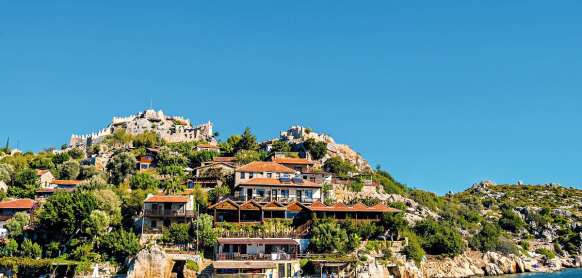
Rainbow Bridge in Odaiba: All You Need To Know!
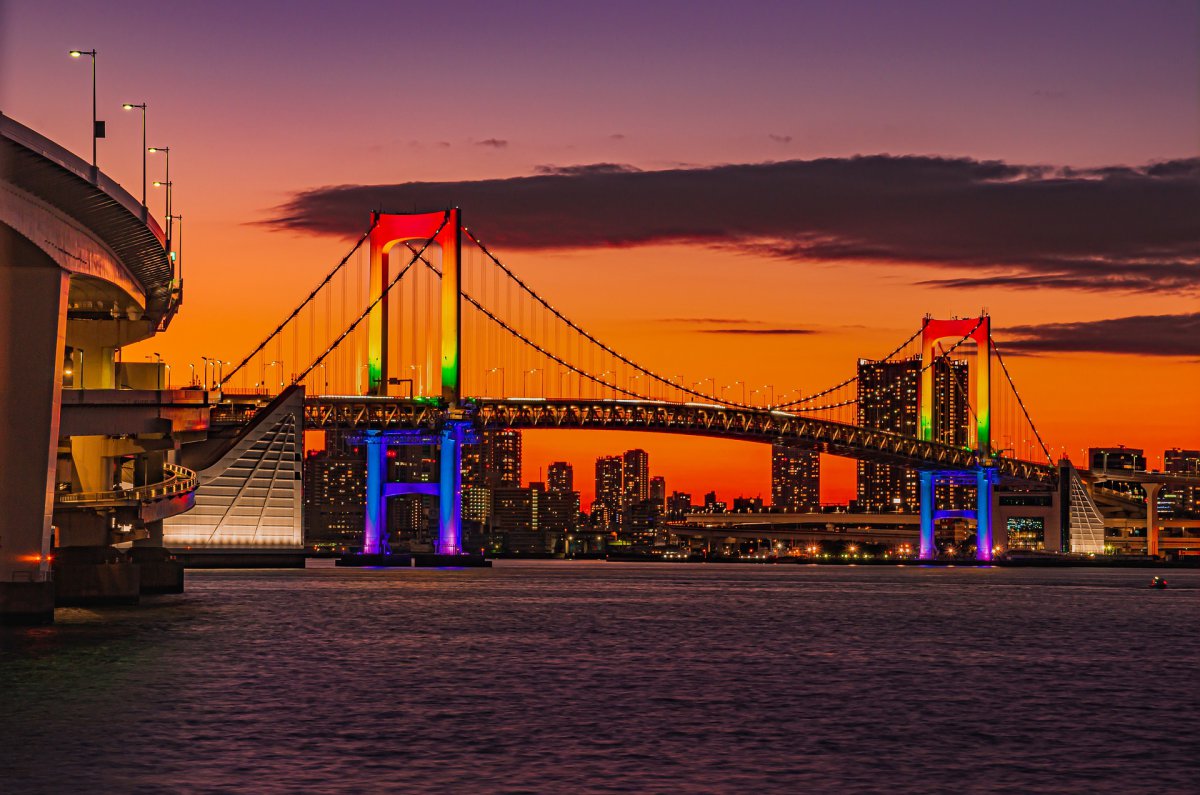
Rainbow Bridge is a huge and beautiful suspension bridge in the northern part of Tokyo Bay, connecting Odaiba to central Tokyo. Odaiba is an ultra-modern, manmade island that is incredibly popular with tourists. Since its opening in 1993, the brightly lit Rainbow Bridge has been one of the iconic symbols of Tokyo. It is prominently featured in photos and videos and used in many TV dramas and movies.
The suspension bridge is 798 meters long and stands 52.4 meters above sea level, with two 126-meter towers supporting the construction. It is a two-story bridge that carries different transportation lines; road traffic can cross the bridge as well as the Yurikamome Line, a driverless, automated transit service. There is also a walkway for pedestrians. This amazing bridge has become a major tourist attraction offering panoramic views of the Odaiba waterfront, which is beautifully illuminated at night.
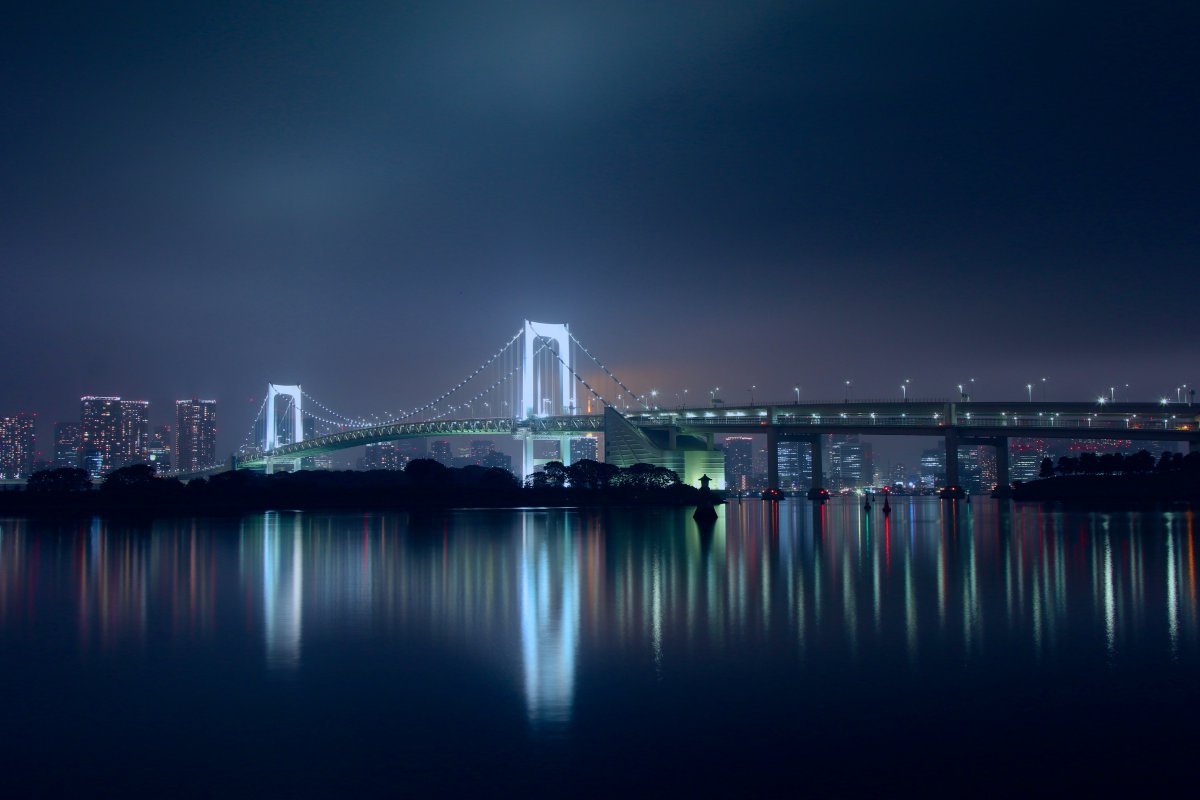
About Odaiba Area
Building the rainbow bridge, illumination and events, viewpoints rainbow bridge, crossing rainbow bridge, how to get to the rainbow bridge, japan wonder travel tours in tokyo, articles you may also like.
Back in the day, Tokyo had one center, the area surrounding Tokyo Station and the Marunouchi area, but as the city grew, the city became too large to have just one single designated center. Sub-metropolitan centers called fukutoshin were designated around the periphery of Tokyo and Odaiba became one of these fukutoshin. The artificial island of Odaiba was constructed at the end of the Edo Period (1603-1868) to protect the city of Tokyo from marine attacks. Nowadays it is known as a futuristic high-tech entertainment hub where you can enjoy shopping in several huge entertainment complexes, visit the headquarters of the popular TV channel Fuji, and check out the famous Gundam Statue , the replica of the Statue of Liberty , and the popular indoor theme park Tokyo Joypolis for the exciting rides!

The Rainbow Bridge was constructed by Kawasaki Heavy Industries. The construction of the bridge began in 1987 and was completed 6 years later in 1993. In order for the ships to pass through, it had to exceed 50 meters in height, but its height was also limited because of its proximity to Haneda Airport. This truss deck suspension bridge is made with vertical steel cables to support its dual decks. Colored in white, the towers of the bridge were designed to harmonize with the skyline of central Tokyo as viewed from the Odaiba standpoint.
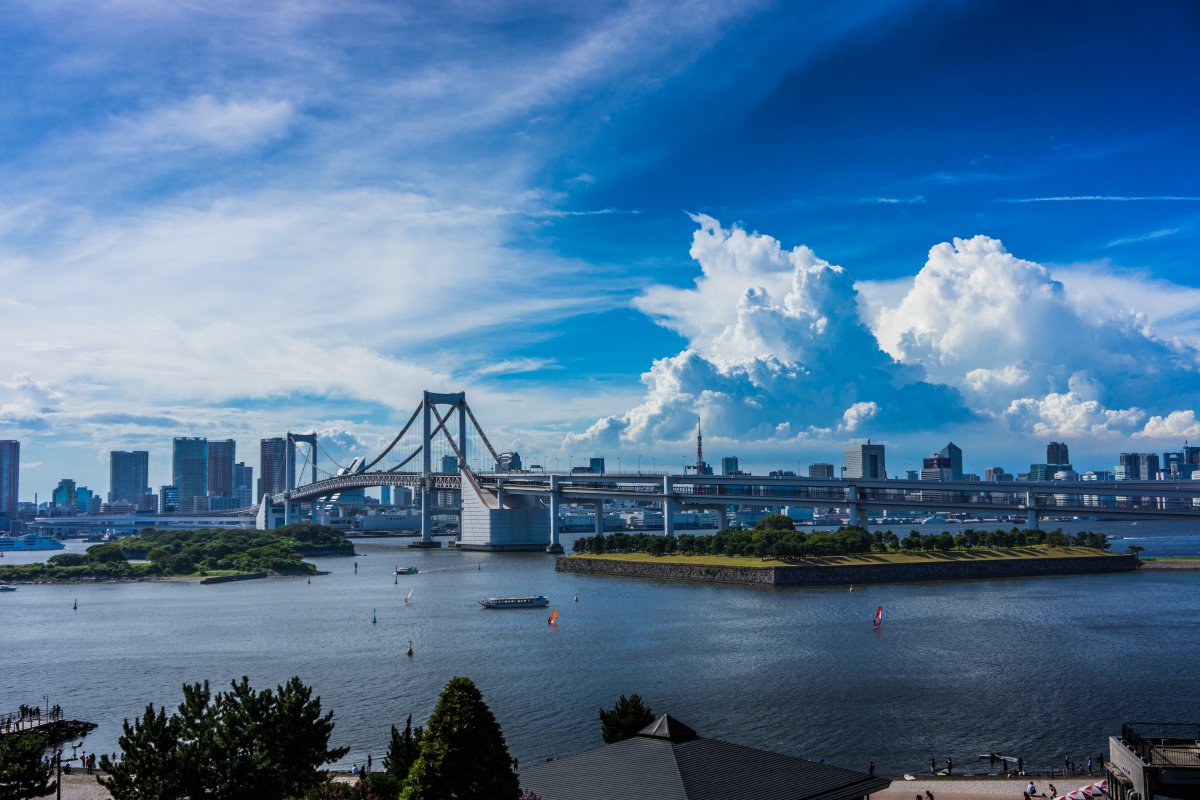
The bridge is famous for its illumination at night when it is showing its wonderful colors that depend on the day and time. Every day, after sunset, the 444 lights brilliantly illuminate the bridge in the dark. The suspension cables are lit either white, green, or coral pink, while the bridge’s towers transform seasonally, showing different shades of white. The illumination color of the main tower shows a cool white in summer and a warm white in winter. Solar panels charged up during the day, stay on from sunset to 12am and the lights between the suspension towers move rhythmically while changing colors. The light-show patterns differ on weekdays and weekends. But during the entire month of December and into early January, the towers are lit up in rainbow colors. The colors reflect beautifully on the white supporting towers.
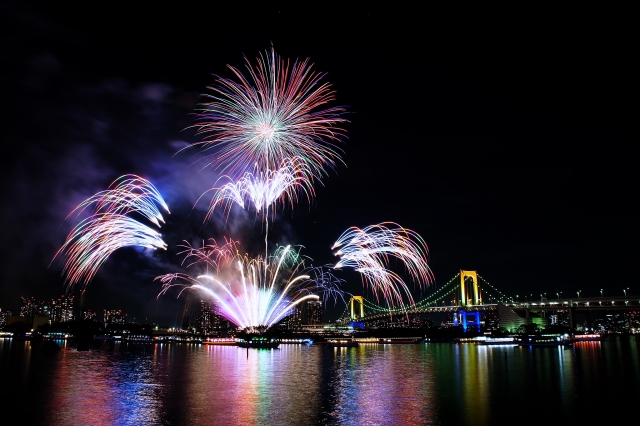
Every Saturday in December at 7pm, there is fireworks show right next to the bridge at 7 pm and every year on August 26 Rainbow Bridge Day is celebrated. In addition to the special December illumination, this symbolic bridge occasionally displays different colors for various specific events. For example, pink for Pink Ribbon Day in October or blue for World Diabetes Day in November. The bridge’s symbolic illumination was also used during the rise of COVID-19 cases in Tokyo when it was lit up red for some period of time.
There are numerous viewpoints around the bridge, and listed below are a few great spots where you can take perfect photos.
One super spot is the Hachitama Spherical Observation Room on the 25th floor of the Fuji TV building (admission ¥700 yen for adults). Here you can enjoy a 360 degrees panoramic view of Tokyo Bay, including the bridge. Tripods are allowed here for making amazing time-lapse shots in the evening.

Some other good vantage points are along the bridge walkway, where there are several observation decks. The North route is recommended for taking the best picture of the illuminated bridge with the sunset and skyscraper in the background.
Last but not least, is a nearly hidden spot at the Shibaura South Wharf Park. You can see the bridge from the bottom here, and at night catch a shot of the traditional pleasure boats passing close by.
There are two 1.7 km walkways on the second deck called the Rainbow Promenade : the South route and North route are two separate walkways and do not connect on the bridge. From the north route, you can view the inner Tokyo harbor, the Tokyo Tower, and the Tokyo Skytree, while the south route offers a view of Tokyo Bay and, at times, even Mount Fuji.
As the bridge is freely accessible to the public, many tourists, joggers, and photographers are using these walkways. It takes about 20 to 30 minutes to cross the bridge on foot, though many visitors stop at the observation areas, where there are sitting benches to take in the view. The walkway is open from 9am until 9pm in the summer (from April to October) and between 10am and 6pm in winter (from November to March), with the last admission 30 minutes before closing time. It can get pretty windy on the bridge, so bring a nice warm jacket and leave your hat at home. When there are strong winds, the walkways may be closed for safety.
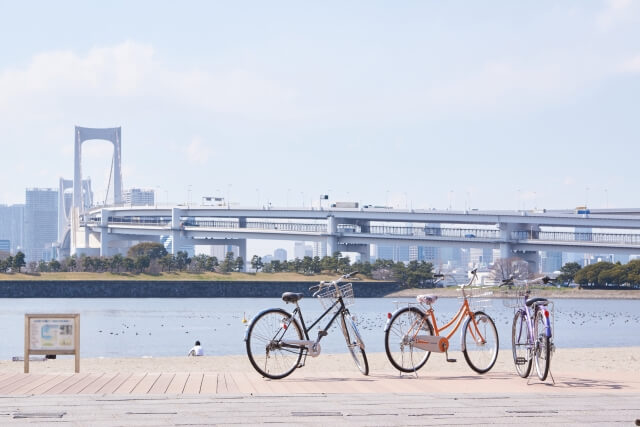
Cycling across the Rainbow Bridge is forbidden, but you are able to walk your bicycles across with a wooden board with small wheels (free of charge). If you want to go cycling around Odaiba, you can start your walk across the Rainbow Bridge from the Shibaura Minami Futo Park .
The bridge is within walking distance from the Odaiba-Kaihinkoen and Shibaura-Futo stations on the Yurikamome Line. From the center of Tokyo, take the JR Yamanote Line to Shimbashi Station, and transfer to the Yurikamome Line. This train takes you on an exciting journey with a wide window in the place of a driver’s cockpit. Speeding through the capital, around a long spiral turn, and over the water, this ride is the closest thing you can get to a roller coaster with amazing city views!
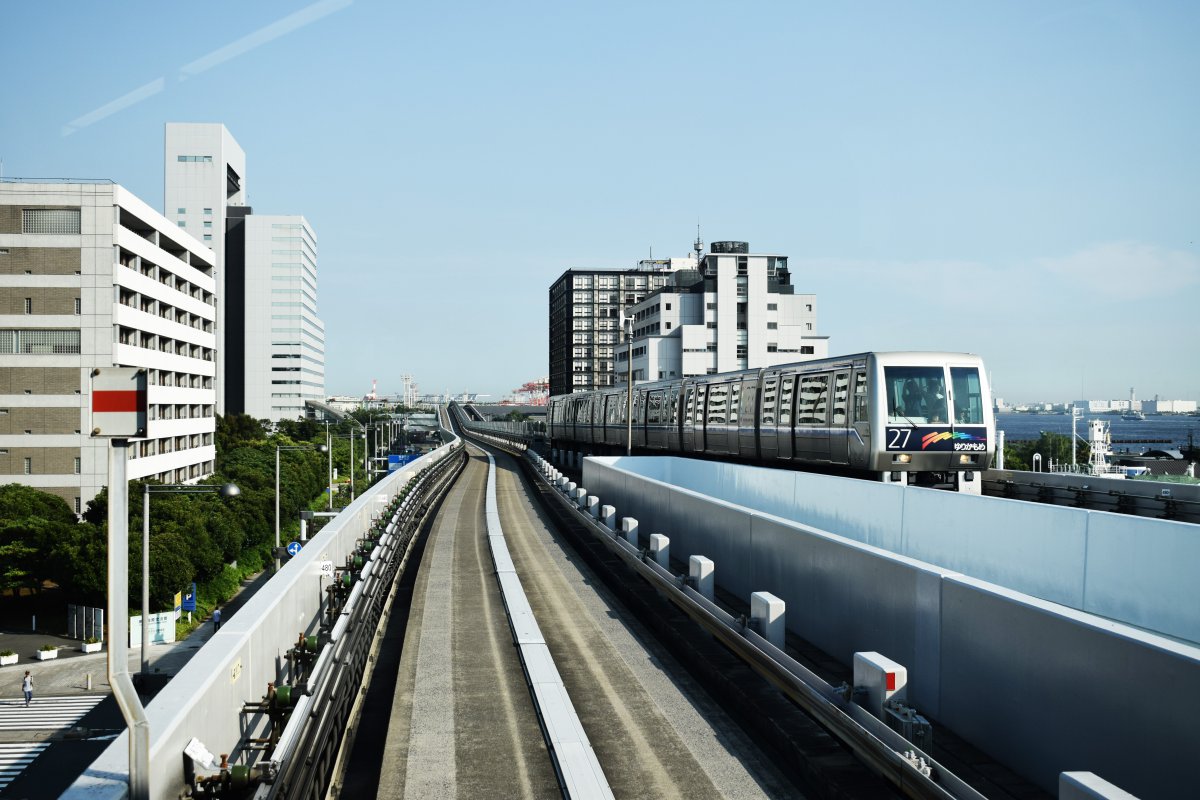
Japan Wonder Travel is a travel agency that offers guided tours throughout Japan. From private walking tours to delicious Food and Drink tours, we can help organize the best tours just for you! If you want to explore Japan and learn more about the history and backstories of each area you are traveling in, our knowledgeable and friendly guides will happily take you to the best spots! In addition, we can provide you with any assistance you may need for your upcoming trip to Japan, so please feel free to contact us if you have any questions or need some help!
▶ Tokyo Tsukiji Fish Market Food and Drink Tour Explore the most lively and popular fish market in Tokyo, where you will have the chance to try some of the local’s favorite street foods and sake along with your friendly English-speaking guide!

▶ Tokyo 1–Day Highlights Private Walking Tour (8 Hours) There’s no better way to explore an area than taking a tour with a knowledgeable local guide. You will have the chance to learn about the history and interesting background stories of Tokyo, as well as discover some hidden gems which can be hard to do without a guide.

▶ Shinjuku Bar Hopping Tour: Experience Tokyo’s Nightlife in Izakaya Check out the best spots in Shinjuku while bar hopping through the lively and vibrant area. Try some delicious local food and drink as you explore the narrow yet photogenic alleys that the town has to offer. Experience Japanese izakaya culture and drink in Shinjuku like the locals!
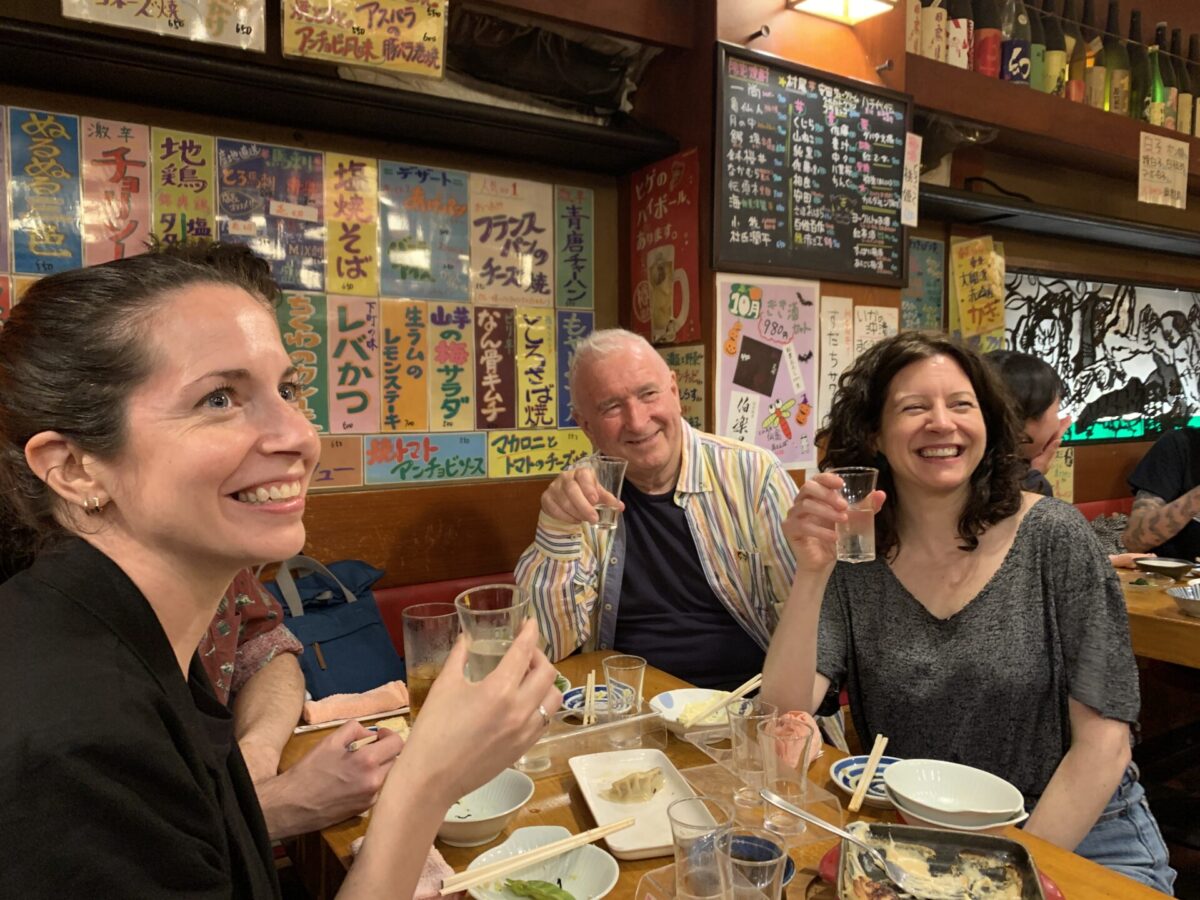
The Rainbow Bridge is an architectural and cultural symbol crossing Tokyo Bay and connecting Tokyo with the man-made island of Odaiba. The view of the colorfully lit bridge, with skyscrapers in the background, enriches the metropolitan scope and beauty of Tokyo. In Odaiba, there are so many things to see and do, you will never get bored! Whenever you visit this exciting Odaiba area, be sure to walk across the bridge and take in the beautiful and peaceful view of the city.
Follow us on Instagram or Facebook for more travel inspiration. Or tag us to get featured!
Happy traveling!
Stay informed of the best travel tips to Japan, the most exciting things to do and see, and the top experiences to have with the Japan Wonder Travel Newsletter. Once every two weeks we will introduce you to our latest content.
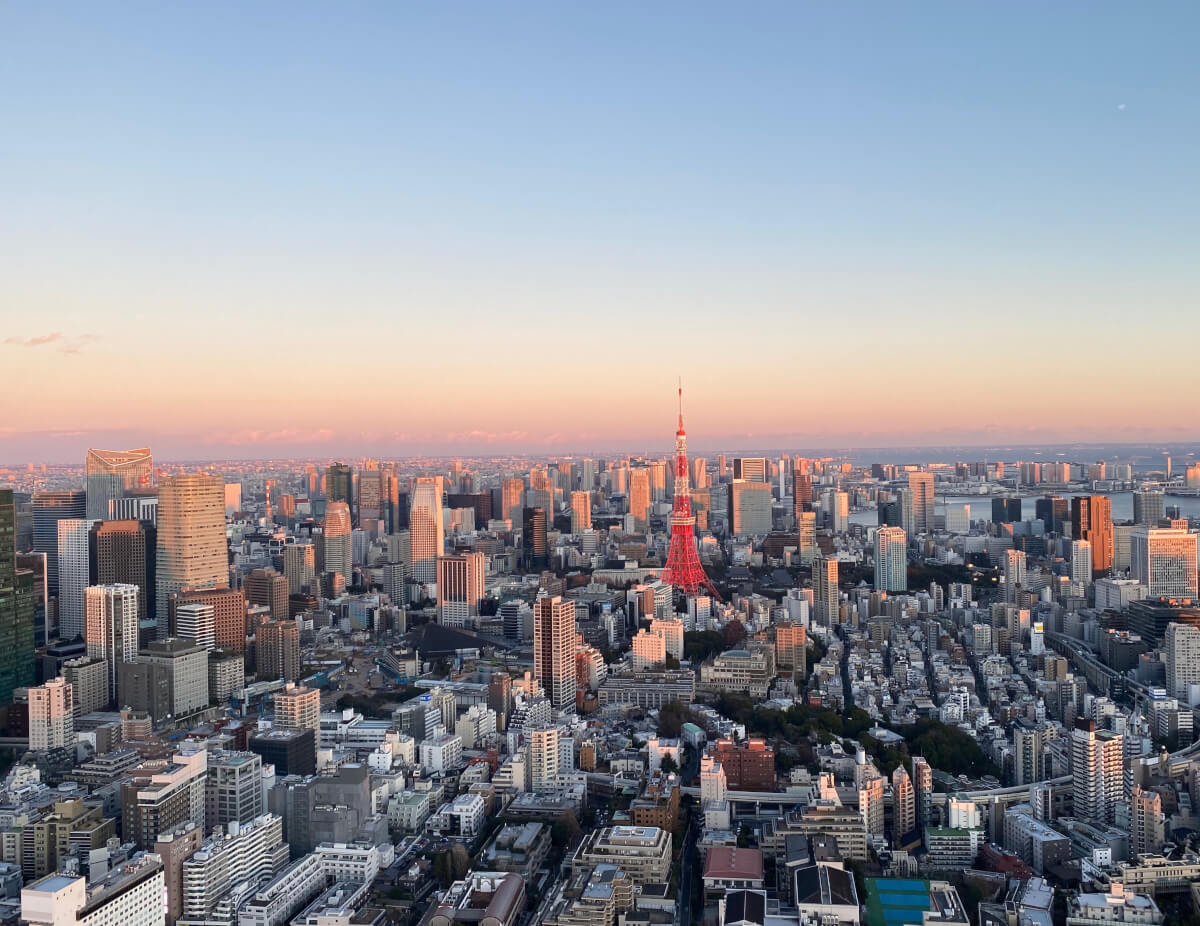
This post contains some affiliate links. When you click through and make a purchase we may receive some commission, at no extra costs to you.
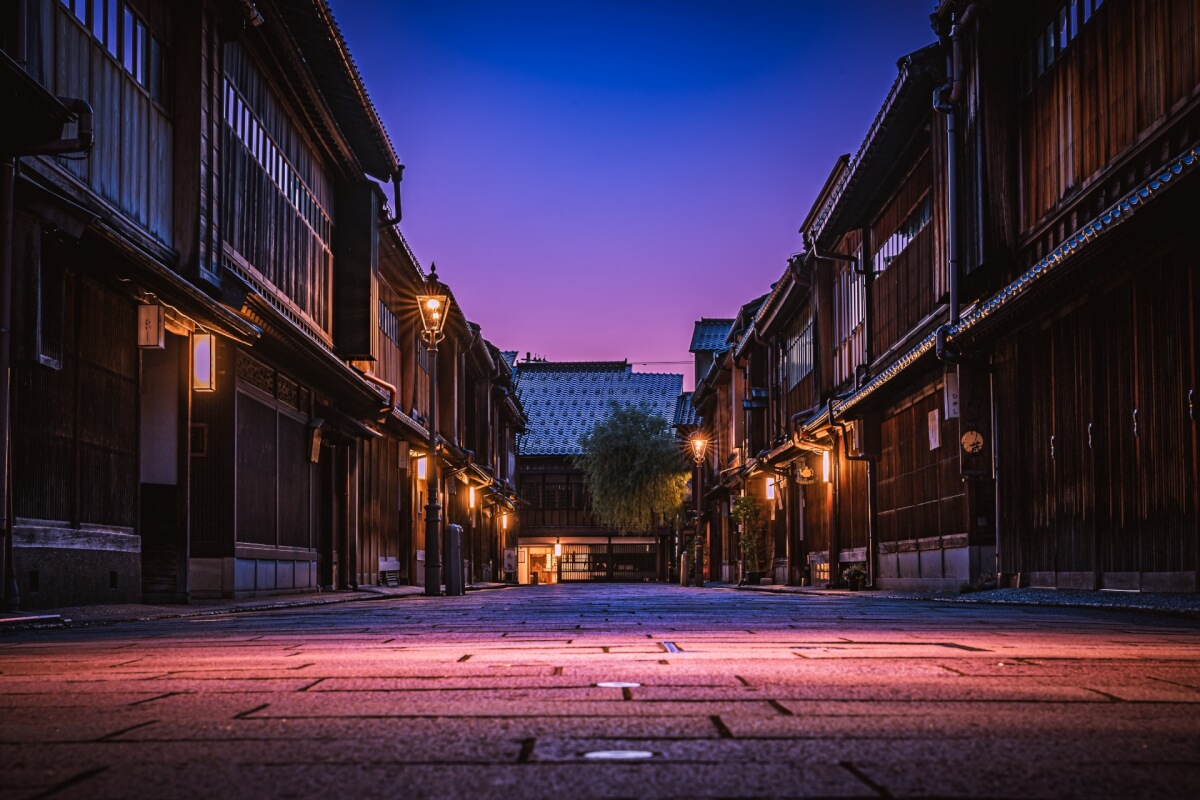
- Popular destinations
- Hidden places in Japan
- Tours and workshop
- Food and drink in Japan
- Itinerary in Japan
- Places to visit in Tokyo
- Food and drink in Tokyo
- Seasonal events
- Tours & workshops
- Tokyo This Week
- Day trip from Tokyo
- Itinerary in Tokyo
- Places to visit in Kyoto
- Food and drink in Kyoto
- Itinerary in Kyoto
- Day trip from Kyoto
- Travel tips
- Accommodation
- Cultural tips
- Transportation
- Tokyo Tours
- Kyoto Tours
- Kimono Rental
- Fukushima Tours
- Mount Fuji Tours
- Tour Package
- Media Kit(English/日本語)
- Tours & Experiences
- Tailor-made Trips
- Bahasa Indonesia
We are happy to see you again!
Continue with
Or use email.
No Account? Create one
Create account
Already have an account? Sign in
Quickly Sign up with
I agree to Japan Travel's Terms of Service and Privacy Policy . Terms of--> and acknowledge that Japan Travel's Privacy--> applies to me.-->
Email reset password link
Please check your inbox and click the link we will send to you.
A Walk on Tokyo's Rainbow Bridge
Architectural highlights and great views

The Rainbow Bridge connects Tokyo's mainland to the reclaimed Odaiba island waterfront. You use the Yurikamome train line , drive on it with your car, or the best option would be to walk it. You can see some amazing views from the bridge, both looking towards Tokyo as well as towards Odaiba. The walk is about 10 minutes long, if you don't stop to take many photos, and much longer if you spend the time to enjoy the views. Keep in mind the bridge will close half an hour before 9 p.m. in the summer and before 6 p.m. in winter.
Find out more about Rainbow Bridge .
- Share on Facebook
- Share on Twitter
- Copy link to share
By George Popescu
Community writer
Join the discussion

Explore nearby

Tokyo Bay Fireworks
By Stefan Bauer

Shibaura Island in Minato - 1
By Yuliya Boda

Kua Aina Sandwich
By Chris Barnes
Information
Rainbow Bridge
3-33-19 Kaigan, Minato, Tokyo, Japan ( Directions )
Book your trip
Find a nearby hotel, top articles.
- Recommended

Kurobe Unazuki Canyon Route to Link with Tateyama Kurobe Alpine Route

The Ultimate Guide to Thrifting in Tokyo

Tokyo One of the World's Most Walkable Cities

Extraordinary Experiences in the Great Nature of Izu-Oshima, the Closest Island From Central Tokyo

Tokyo Takes 2nd Place on Top Coffee Cities List

Tokyo Named #1 City for Food and Drink

2024 Grand Sumo Tournaments

2-Day Hachijojima Retreat: Recharge Your Mind and Body

Mount Omuro

Guide to Bringing Medicines Into Japan

Your Name: Real-Life Locations in Tokyo

Hachiko Statue in Shibuya

Iwatayama Monkey Park

Shibuya Crossing

Daikoku Car Meet

Guide to PASMO Cards

Guide to Suica Cards

Kanamara Penis Festival

Japanese Urban Legends
Let us know how we can help.
Help us improve JapanTravel.com
We welcome any suggestions regarding this content. Your feedback is confidential and will be used to help improve this page.
Suggest an edit
https://en.japantravel.com/tokyo/a-walk-on-rainbow-bridge-tokyo/13263

Thank you for your support!
Your feedback has been sent.
- Haneda Airport
- Okachimachi
- Shimokitazawa
- Kiso Valley
- Nozawa Onsen
- Shinanomachi
- Kumano Kodo
- Japan Journeys Style
- Things to do
- Restaurants
- Hiking and Walking
- Amusement Parks
- Animal Attractions
- Museums and Digital Art
- Parks and Gardens
- Sports and Stadiums
- Temples and Shrines
- Experiences
- Places to stay

- Amusement Park
- Ferris wheel
- Attractions
- Museum and Digital Art
- Destinations
- Things To Do
Crossing the Rainbow Bridge and Diving Into an Odaiba Tour
The artificial island of Odaiba is one of the primary leisure centers in Tokyo. Originally built for defensive purposes in the mid-19 th century, the island was massively redeveloped in the 1990s and has become a popular site for shopping malls, museums, and other attractions. While you can easily get there by train, a walking tour across the Rainbow Bridge offers unparalleled views of Tokyo. This Odaiba Tour will take you across the bridge and through many of the most visited spots on Odaiba, such as the Mori Digital Art Museum, the large Odaiba Gundam statue, and Oedo-Onsen-Monogatari. You can find a map of the tour here .
Beginning the Odaiba Tour
Completed in 1993, The Rainbow Bridge links the island of Odaiba to the mainland and is named for the multicolored lights that illuminate the bridge after dark. Used primarily for cars and trains, even many locals are unaware that you can cross the bridge on foot. From the southern exit of Tamachi station, begin your Odaiba Tour by following Nagisa Avenue until you reach a tower that marks the entrance to the Rainbow Bridge. After a short elevator ride, you can walk the length of the bridge, which takes approximately 30 minutes . Although, the cars zipping by can be a bit noisy, few visitors actually take the time to walk along the bridge, and there are more than a few viewing platforms. These platforms hang out over Tokyo Bay and offer an unhindered view of the city’s skyline.

Beaches and Baths
The Rainbow Bridge walking path exits at Odaiba Beach. The beach is the perfect place to relax in the summertime. Following the path that runs along the beach west, you’ll come across the Aqua City Odaiba. This is one of several malls in the area and across from it you’ll find another massive mall called DiverCity. If you’re looking for some recreations, Aqua City is adjacent to Joyopolis, an arcade/amusement park mashup that features attractions which blur the line between games and rides. On the other hand, if you’re an American and are feeling a bit homesick, a small-scale replica of the Statue of Liberty sits on the northeast shore of Aqua City.

Continue your Odaiba walk by passing south between Aqua City and the towering Hilton Hotel. This will take you onto a raised walkway, which passes by the iconic Fuji Television building. Designed by Kenzo Tenge of the futuristic Metabolist school of Japanese architecture, the building’s large titanium sphere and lattice walkways are worth a photo or two.
As you continue south, you’ll reach the grassy Western Promenade. Along this walk, you’ll find the Miraikan, a science museum full of hands-on exhibits for kids and science buffs. If you need to relax, make a right at the next thoroughfare and then a left at the first intersection. After five minutes you’ll come to Oedo-Onsen-Monogatari. This sprawling public bath complex aims to emulate the feeling of a Japanese town from the Edo period. It features indoor and outdoor baths, massages, relaxation rooms, and several options for food. To save money and avoid crowds, try to arrive early in the day.
Robots and Holograms
Once you’ve melted away all your stress, continue your Odaiba tour by walking back along the promenade. This time, stop short of Diver City. Here you’ll find the towering Gundam statue modeled on the robots from the popular anime series. The promenade continues to right, and if you follow it long enough, you’ll come to yet another mall called VenusFort. Unlike the previous two, which feature more standard decor, VenusFort is modeled on Venice. It features mock marble fountains, faux stone molding, and a ceiling painted to look like the sky. The mall is a fun visit, though visitors should prepare themselves for a spectacle that is more Vegas than Venice.
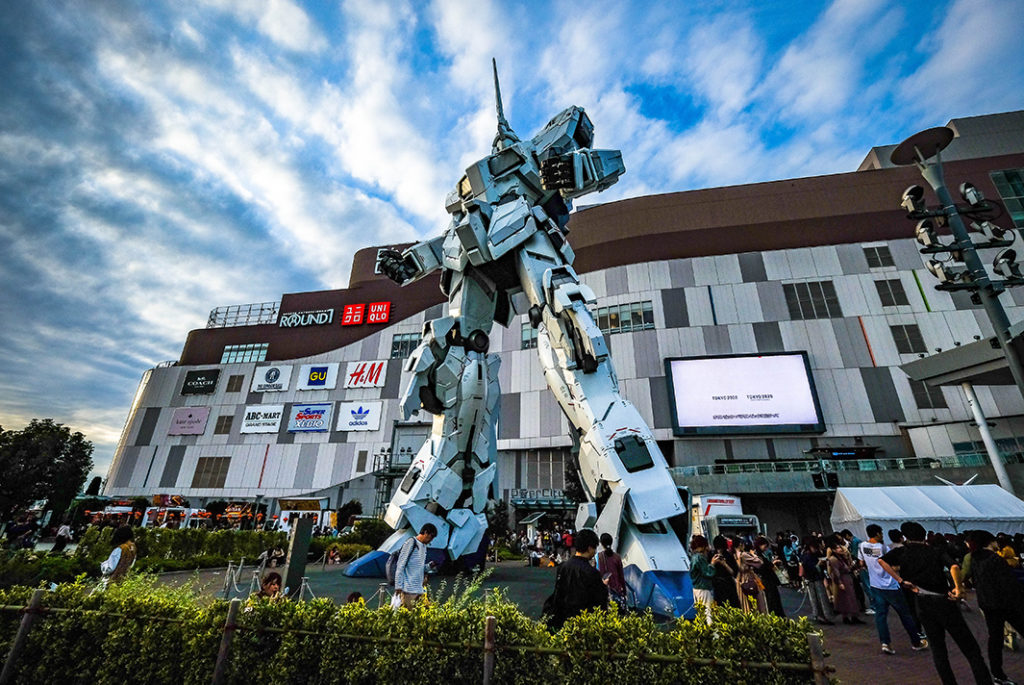
Beside Venus Fort is the Megaweb showcase of Toyota cars, which is worth a visit if you’re an automobile enthusiast. You can even ride a few cars along test tracks. If, like me, you don’t even have a driver’s license, however, you can continue through the building to the Mori Digital Art Museum. The museum hosts the holograms, digital projections, and other technological creations cooked up by the teamLab artistic collective. The museum has become a sensation in recent years, so be prepared for crowds, depending on the time of your arrival. When you’re ready to head back, consider ending your Odaiba tour by stopping off at the adjacent Giant Sky Wheel. This Ferris wheel rises up high into the sky and affords a stunning view of the city at night.
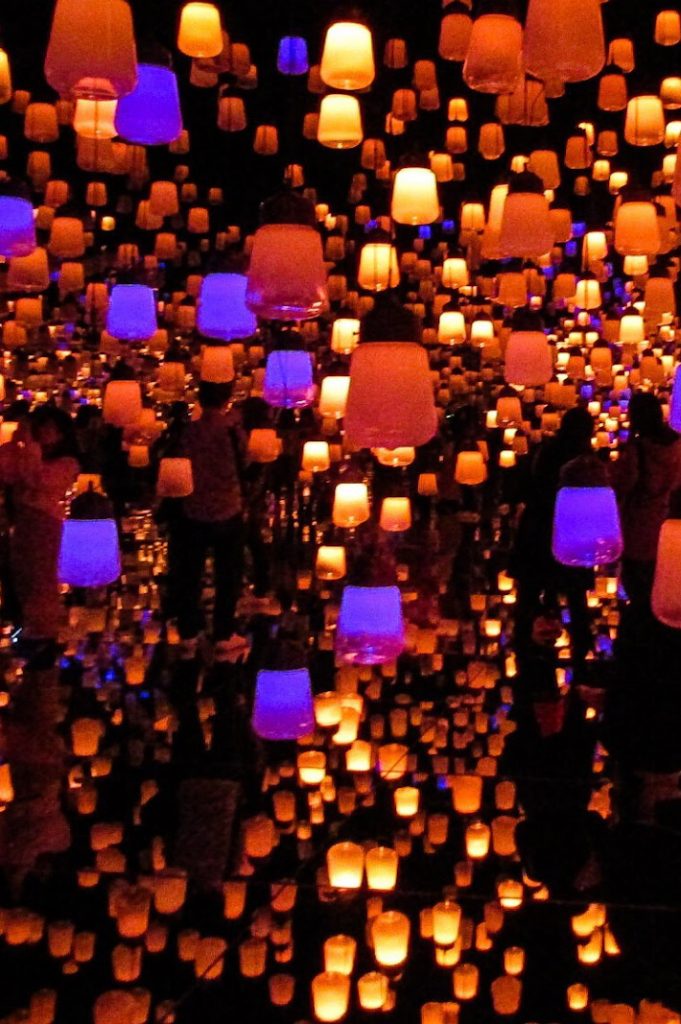
Finishing the Odaiba Tour
After the Ferris wheel, you’ll no doubt be ready to finish your Odaiba tour and get some much-needed rest. From the Ferris Wheel, the Tokyo Teleport train station is just a five-minute walk north. From here you can get a train back to the mainland and end your journey through the futuristic amusements of Odaiba.

Post by Japan Journeys .
RELATED ARTICLES MORE FROM AUTHOR
Umi no hi festival a different way to experience tokyo in the summer, gundam the giant space robot arrives in yokohama, lose yourself in the digital landscapes of teamlab borderless, most popular, the hakone open-air museum: a playground for art enthusiasts, exploring the tarō okamoto memorial museum, okuno-in: kōyasan’s pathway through time, exploring the iwadatami rocks and boating on the arakawa river, kungyokudo incense: modernity meets tradition in tokyo, mind blowing sub-terranean art at chichu art museum, catch your own meal at zauo fishing restaurant tokyo, tofuku-ji temple: mirei’s modernism in the heart of kyoto, tokyo’s secret “power spot”: meiji jingu inner garden, rockabillies, dogs in turtlenecks and soothing nature at yoyogi park.
Will Take You to A Microcosm of Japan
Attention Transit Passengers!!
If you have a few hours to spend at Narita AP, why don't you peek into the local life in the town of Narita and its surrounding area. If you have more than 10 hours or more layover, you can visit the big city, Tokyo, as well. Tours; Go to Tour Listings and More Tours for further details 1. 4 to 5-hour tour around Narita (most recommended) 2. 4-hour tour with your private tour guide by public transportation 3. Early morning fish market and the temple ritual starting at 5am 4. Escorted Tokyo day trip by train 5. Escorted Tokyo Day or Night trip by minivan (night tours are also available) 6. 5-hour tour of Itako/Sawara, rural towns near Narita 7. Escorted tours around Narita for 1, 2, 3 nights. *Any tours can be customized to your liking; prioritizing your own interest.
Who would enjoy our tours Those who: 1. have intelletual interest in others' culture/history. 2. like off-the-beaten paths, rather than touristy spots. 3. enjoy listening to the stories behind the scenes. 4. love nature; flowers, plants, birds, fish, animals, landscapes. 5. are adventurous about savoring local food.
copyright©2012 Narita Rainbow Tours all rights reserved.
- Media & Industry
- Meetings & Events
- Select Language 简体中文 繁體中文(香港) 繁體中文(臺灣) India (English) Bahasa Indonesia 한국어 ภาษาไทย Tiếng Việt Singapore (English) Philippines (English) Malaysia (English) Australia/New Zealand (English) Français Deutsch Italiano Español United Kingdom (English) Nordic countries(English) Canada (English) Canada (Français) United States (English) Mexico (español) Português العربية Japan(日本語) Global (English)
- India (English)
- Bahasa Indonesia
- Singapore (English)
- Philippines (English)
- Malaysia (English)
- Australia/New Zealand (English)
- United Kingdom (English)
- Nordic countries(English)
- Canada (English)
- Canada (Français)
- United States (English)
- Mexico (español)
- Global (English)
- Fujiyoshida
- Shimonoseki
- Ishigaki Island
- Miyako Island
- Kerama Island
- Tokyo Island
- Koka & Shigaraki
- Hida Takayama
- Ginza, Nihonbashi
- Beppu & Yufuin (Onsen)
- Ginzan Onsen
- Nagasaki Islands

- Kumano Kodo
- Shikoku Karst
- Amami Oshima
- Hachimantai
- Omihachiman
- Aizuwakamatsu

- Diving in Japan
- Skiing in Japan
- Seasonal Flowers in Japan
- Sustainable Outdoors
- Off the Beaten Track in Japan
- Scenic Spots
- World Heritage
- Home Stays & Farm Stays

- Japanese Gardens
- Japanese Crafts
- Temple Stays
- Heritage Stays
- Festivals and Events
- Theater in Japan
- Japanese Tea Ceremony
- Cultural Experiences in Japan
- Culture in Japan

- Local Cuisine Eastern Japan
- Local Cuisine Western Japan
- Local Street Food
- Japan's Local Ekiben
- Japanese Whisky
- Vegetarian and Vegan Guide
- Sushi in Japan Guide
- Japanese Sake Breweries

- Art Museums
- Architecture
- Performing Arts
- Art Festivals
- Japanese Anime and Comics
- Japanese Ceramics
- Local Crafts

- Scenic Night Views
- Natural Wonders
- Theme Parks
- Samurai & Ninja
- Iconic Architecture

- Wellness Travel in Japan
- Japanese Ryokan Guide
- A Guide to Stargazing in Japan
- Relaxation in Japan
- Forest Bathing (Shinrin-yoku)

- Experiences in Japan
- Enjoy my Japan
- National Parks
- Japan's Local Treasures
- Japan Heritage
- Snow Like No Other
- Wonder Around Japan

- Visa Information
- Getting to Japan
- Airport Access
- COVID-19: Practical Information for Traveling to Japan
- Anime Tourism
- Countryside Stays
- Accessible Tourism
- Hokkaido Great Outdoors
- Scenic World Heritage in Tohoku
- Shikoku’s Nature and Traditions
- Southern Kyushu by Rail

- Traveling by Rail
- How to Travel by Train and Bus
- JR Rail Passes
- Scenic Railways
- Renting a Car
- Sustainable Travel in Japan
- Travel Brochures
- Useful Apps
- Online Reservation Sites
- Eco-friendly Accommodation
- Luxury Accommodations
- Traveling With a Disability
- Hands-free Travel
- How to Book a Certified Tour Guide
- Volunteer Guides
- Tourist Information Center

- Japanese Manners
- Spring in Japan
- Summer in Japan
- Autumn in Japan
- Winter in Japan
- Cherry Blossom Forecast
- Autumn Leaves Forecast

- Japan Visitor Hotline
- Travel Insurance in Japan
- Japan Safe Travel Information
- Accessibility in Japan
- Vegetarian Guide
- Muslim Travelers
- Safety Tips

- JAPAN Monthly Web Magazine
- Arts & Cultures
- Nature & Outdoor
- Festivals & Events
- Insider Blog
- Things to do
- Local Guides
- Food & drink
- Traditional
- Hokuriku Shinetsu

My Favorites
${v.desc | trunc(25)}
Planning a Trip to Japan?
Share your travel photos with us by hashtagging your images with #visitjapanjp
- Rainbow Bridge
Rainbow Bridge レインボーブリッジ
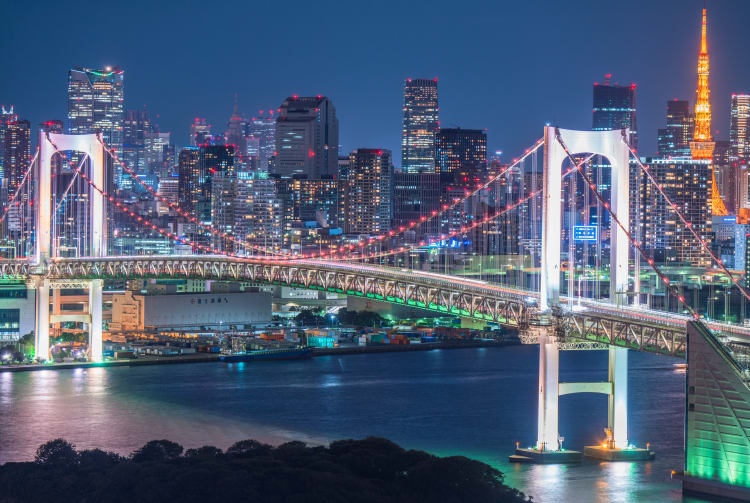
Minato-ku, Tokyo-to
- View on Google Maps
- Get Transit Info
Linking Odaiba and Shibaura Pier, the colorful Rainbow Bridge and its light displays have become a major tourist attraction
- Panoramic views of the Odaiba waterfront
- Having a picnic on the bridge's benches or at nearby Seaside Park
How to Get There
The bridge is accessible on foot from Odaiba-Kaihinkoen and Shibaura-Futo stations, or by taxi.
Tokyo's most colorful crossing
The supporting towers of the bridge have been painted white, but they are lit up at night in rainbow colors in December, giving the bridge its nickname—it is officially known as the Tokyo Bay Connector Bridge.
The bridge and its views are quite beautiful even when illuminated in regular lights during the rest of the year.
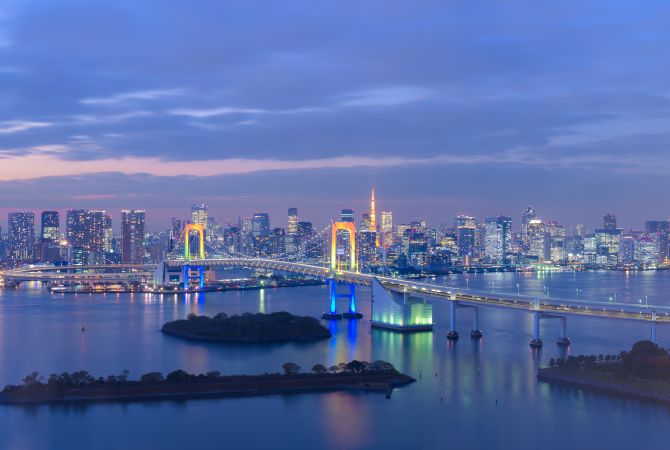
Savor the view
Crossing northern Tokyo Bay from the Odaiba waterfront entertainment district to Shibaura Pier, Rainbow Bridge accommodates both vehicles and pedestrians. You can't cross the walkway after 9 p.m. in the summer or 6 p.m. in the winter, however, and while you can push your bicycle across, you can't ride it over the bridge.
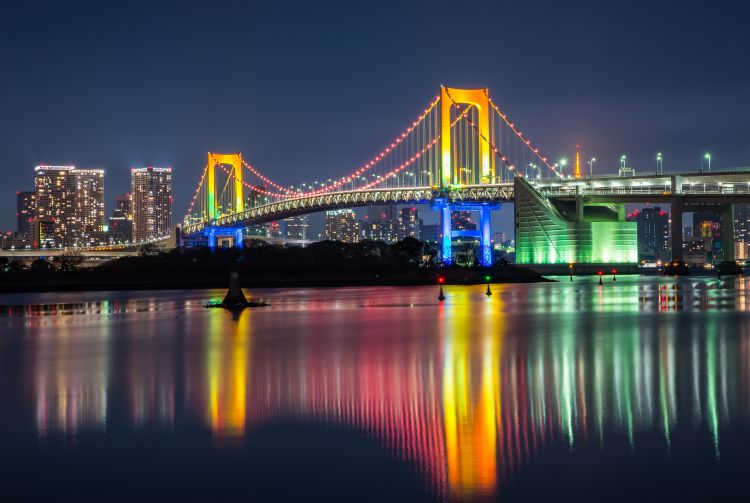
* The information on this page may be subject to change due to COVID-19.
- Scenic Spot
- Scenic Night View
Recommended for You

Please Choose Your Language
Browse the JNTO site in one of multiple languages
Item added to your cart
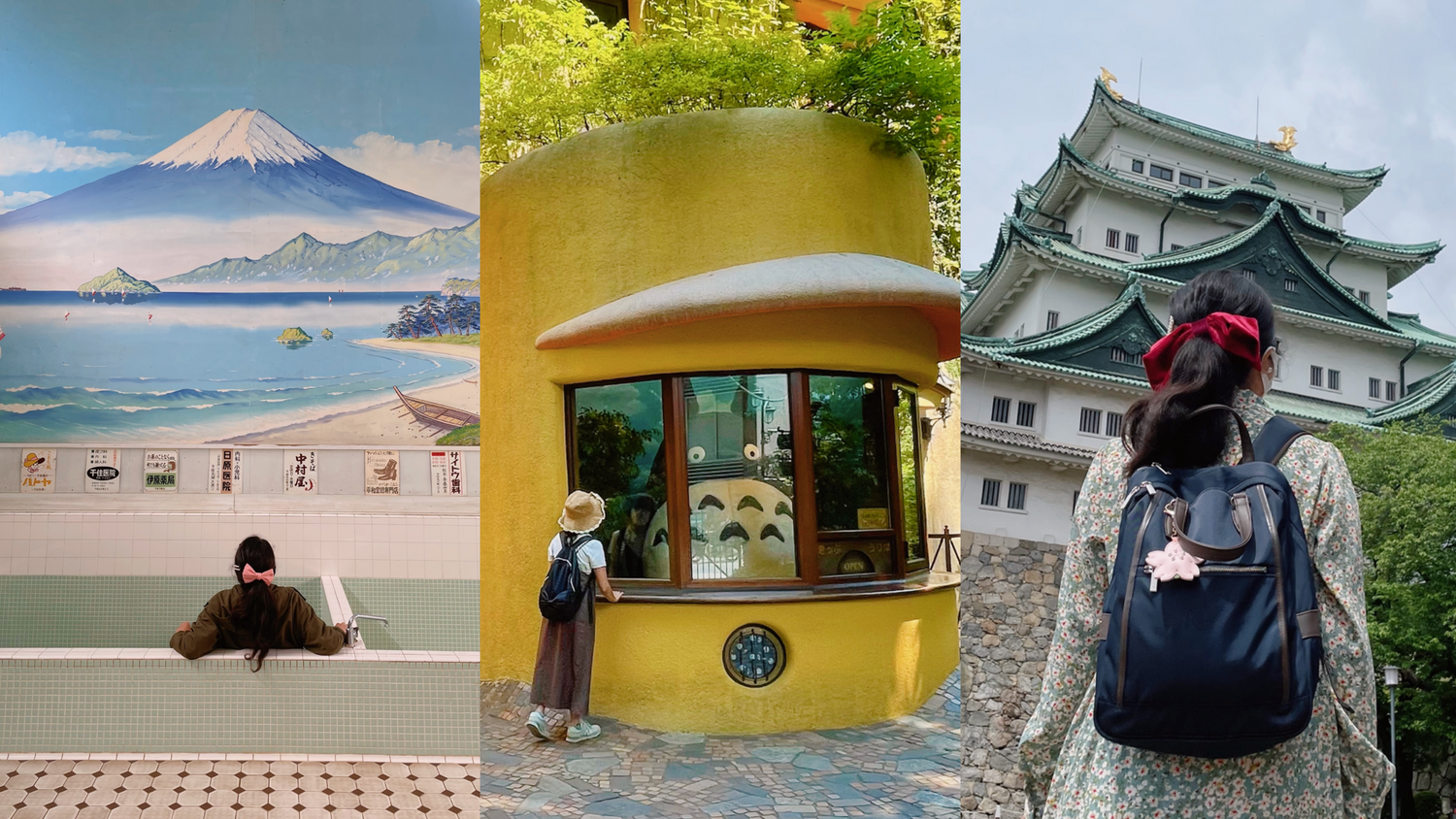
Life is an adventure.

▶️ New Video: 2 Days in Kyoto, Japan 🇯🇵 (cafes, beautiful scenery, & hotel room tour)
Instagram: @rainbowholic
Follow me for more daily Japan reels, travel inspiration, & kawaii content!
- Choosing a selection results in a full page refresh.
- Opens in a new window.
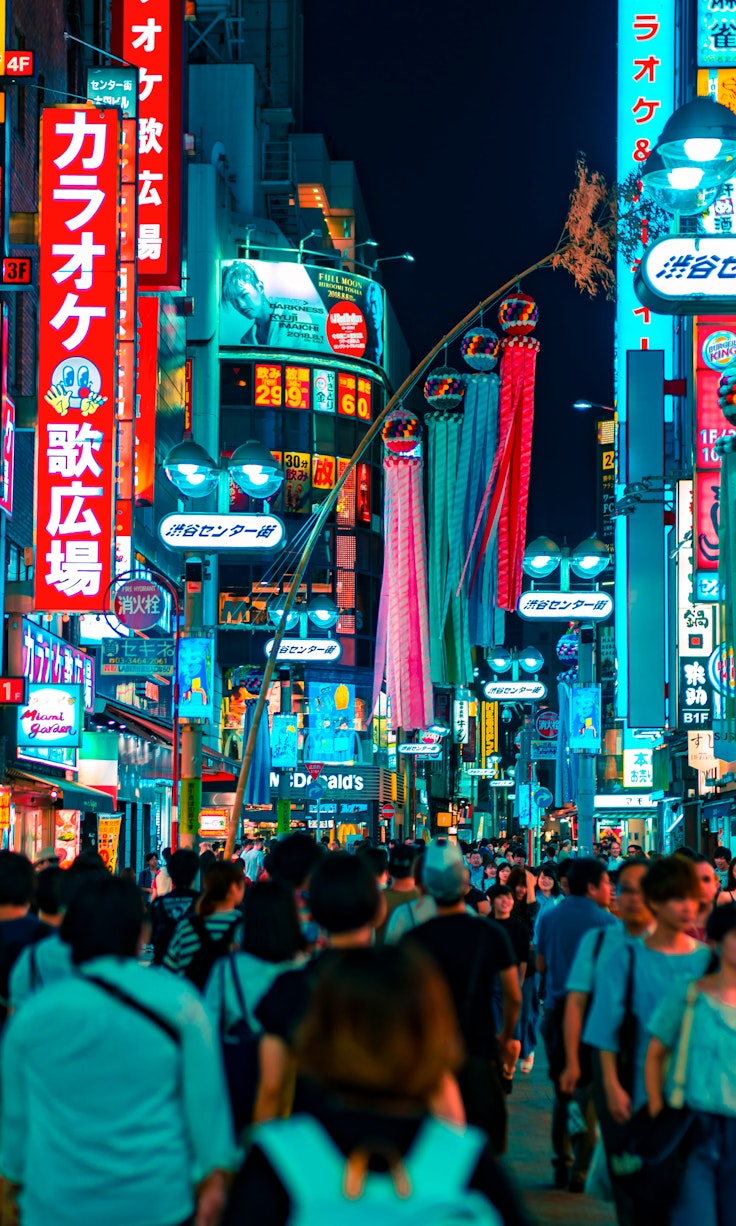
Rainbow Journeys: Tailored LGBT+ Tour Experiences
Dive into a meticulously crafted LGBT+ tour that immerses you in diverse cultures, histories, and landscapes, celebrating the vibrant LGBT+ community. Experience everything from historic havens to exhilarating nightlife, joining a global celebration of love, identity, and pride on this unforgettable journey.
Embark on a voyage where diversity shines and authenticity matters. Tailored LGBT+ Tour invites you to explore the world through a kaleidoscope of cultures, histories, and landscapes, all while embracing the vibrant LGBT+ community.
Our meticulously crafted tours offer an immersive dive into the heart of each destination's queer heritage and present-day splendor, ensuring a travel experience that's as enriching as it is exhilarating. From the cobbled streets of historic LGBT+ havens to the pulsating nightlife of the world's most inclusive cities, our journeys are designed to cater to the wanderlust of every traveler in the rainbow spectrum.
With us, you're not just a tourist but a participant in a global celebration of love, identity, and pride. Ready to embark on an unforgettable adventure? Discover your next destination with a rainbow journey today.
Tour Highlights
Tokyo Highlights:
Asakusa and Ueno offer a rich history with an LGBTQ+ perspective.
Shinjuku and Shibuya boast a youthful and vibrant atmosphere.
Shinjuku's Ni-chome area is the epicenter of gay and lesbian culture in Japan.
Kyoto Highlights:
Abundant temples, serene gardens, and scenic mountainside walks.
Offers a slower pace with well-preserved historical sites.
There is a minimal gay scene, with locals often traveling to Osaka for LGBTQ+ nightlife.
Osaka Highlights:
Features unique urban landscapes, bustling open markets, the oldest Buddhist temple in Japan, and a grand castle.
Known for the warm character of its people, providing a welcoming environment for visitors.
Vibrant nightlife scene that comes alive with fun and excitement.
Tour Itinerary
Tokyo itinerary, exploring historical tokyo.
Start your day exploring Asakusa's Senso-ji Temple and Nakamise Street, spend the afternoon in Ueno with its park, museum, or zoo, and enjoy the evening tasting Tokyo's diverse culinary offerings.
Modern Tokyo and LGBTQ+ Culture
Experience the essence of Tokyo, from Shibuya's iconic crossing and vibrant districts to Shinjuku's shopping and dining, culminating in an evening exploration of the lively LGBTQ+ scene in Ni-chome.
Kyoto Itinerary
Temple hopping and scenic beauty.
Experience the enchanting beauty of Kyoto through a day visiting the golden Kinkaku-ji, strolling through Arashiyama Bamboo Grove, and unwinding with a traditional tea ceremony in a tranquil garden.
Historical Kyoto
Discover Kyoto's spiritual heritage at Fushimi Inari Shrine, immerse in the historical ambiance of Gion and savor traditional Japanese cuisine during your free evening.
Osaka Itinerary
Cultural and historical exploration.
Discover Osaka's rich samurai history at Osaka Castle, explore ancient spirituality at Shitennoji, the oldest Buddhist temple, and immerse yourself in the lively Kuromon Ichiba Market, all before enjoying leisure time in the evening.
Experiencing Osaka's Charm and Nightlife
Spend your day in Osaka enjoying free morning explorations, immersing in local culture and hospitality by afternoon, and exploring the vibrant nightlife and LGBTQ+-friendly spots in the evening.
What's Included
Guide expenses covered.
The vehicle option includes all fees for parking, gas, and tolls
What's Not Included
Food or drink will be provided during the tour
Public transportation costs covered while on tour
Admission fees included
Essentials to Know Before Booking
Historic Landmarks
Professional Guide
Fully Narrated Tour
Easy Access
Choose the appropriate vehicle size for car service based on group size
The legal drinking age in Japan is 20
There is no minimum age for the tour, but it may not suit guests under 18
Comfortable shoes are recommended due to the potential for walking
Options for minimal walking are available upon request
Option to add additional hours to the tour at checkout
Car option available
Open to other requests or accommodations not listed
Meeting Point
The meeting point will be determined based on your itinerary; we'll work with you to find a convenient location.
Frequently Asked Questions
Q: Is this tour only for members of the LGBTQ+ community?
Ans: No, our tours are open to all travelers interested in learning about and experiencing the LGBT+ culture in each destination.
Q: Do you offer private or group tours?
Ans: We offer both private and group tours. Private tours can be customized to fit your specific preferences and needs. Group tours are limited to a maximum of 10 people.
Q: Is there a minimum or maximum age for the tour?
Ans: The tour has no minimum age, but some activities may not suit guests under 18.
Q: Can I add additional hours to the tour?
Ans: You can add additional hours to the tour at checkout for an extra fee.
Q: Do you offer transportation during the tour?
Ans: Yes, we offer the option to include a vehicle in your tour for an additional fee. It will cover all expenses, including parking, gas, and tolls. Depending on group size, choose from a car, van, or bus.
Q: Are meals included in the tour?
Ans: No, food and drink are not provided during the tour. However, if desired, your guide can recommend some great local restaurants and help you make reservations.
Q: Will there be a lot of walking involved in the tour?
Ans: The amount of walking will depend on your chosen itinerary and preferences. Comfortable shoes are recommended, but options for minimal walking can be arranged upon request.
Related Read: Sakura Spectrum: Celebrating LGBTQ+ Culture in Japan
The booking is non-refundable if you cancel within 1 day of the start time.
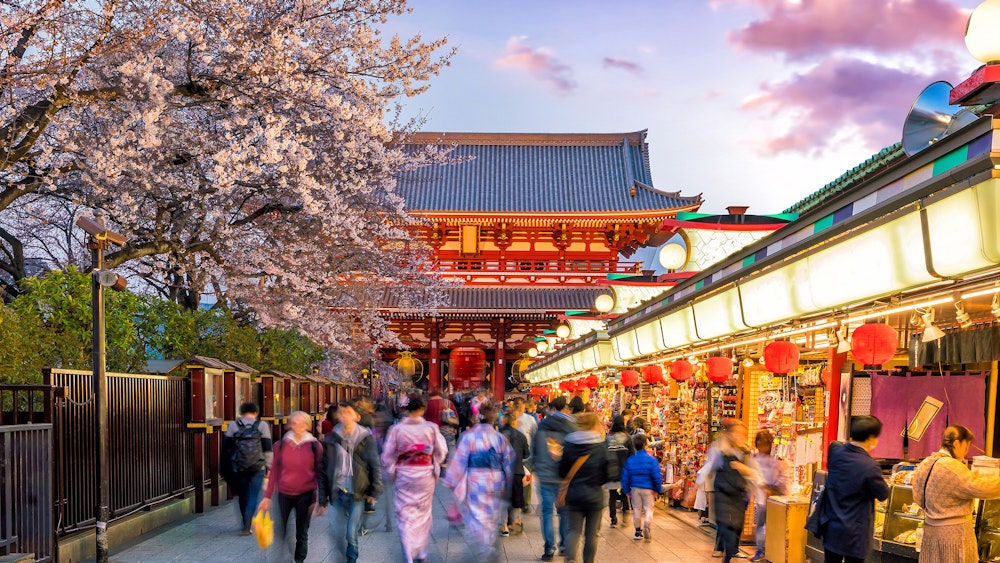
Similar tours
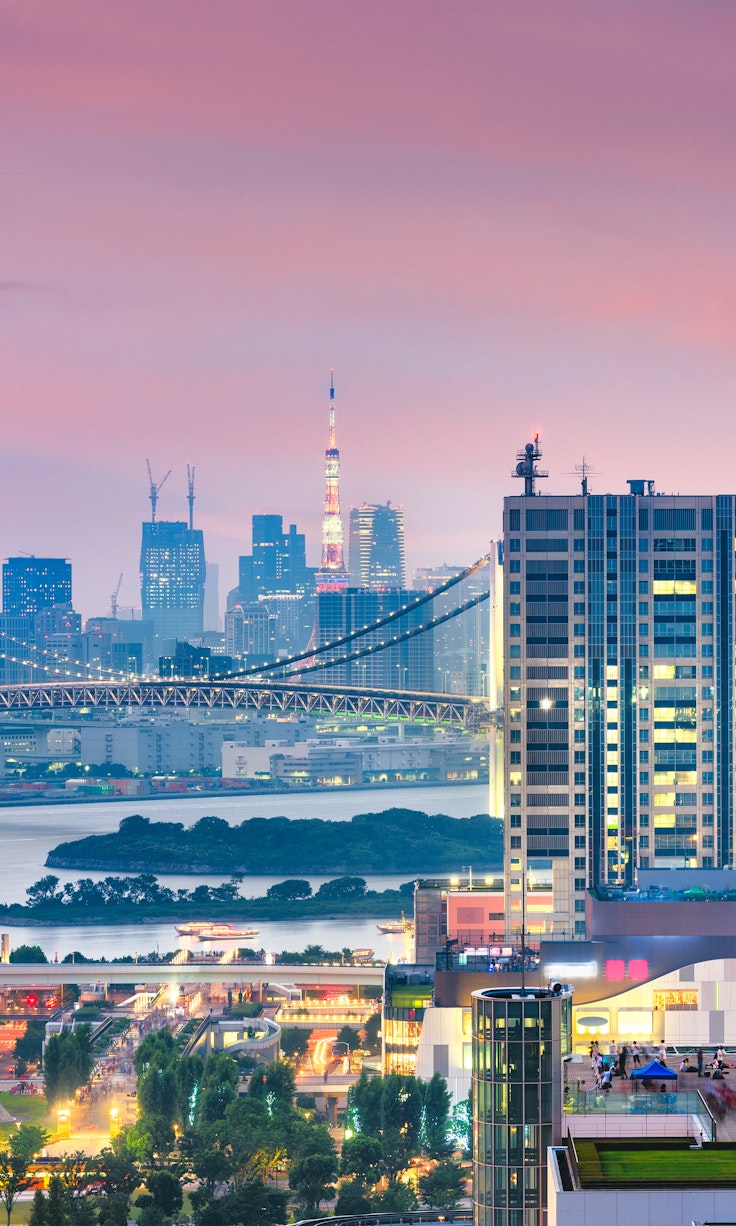

(808) 200-8412
Grand Tour Island

Max Capacity
Visiting 19 Locations in One Day
Adult: $130
Children: $110 (Age 4 to 12)
Promotion: 50% discount per person (only this month)
Included/Excluded
- Free Waikiki Pickup & Drop off transport,Snorkeling gear, Provided complimentary
- Towel, Lunch
Grand Tour Around Island

1. Diamond Head 2. Halona Blowhole 3. Sandy Beach 4. Makapuu Lighthouse and Beach (Rabbit & Tuttle Island) 5. Waimanalo Beach 6. Mac Nut Farm 7. Mokolii (Chinamans hat) 8. Crouching Lion 9. Kahana Bay 10. Laie Mormon Temple 11. Kahuku Shrimp 12. Fruit Stands 13. Sunset Beach 14. Banzai Pipeline 15. Waimea Bay 16. Laniakea Beach 17. Haleiwa Town / Snorkeling Puena Beach 18. Dole Pineapple Plantation 19. Green World Coffee Farm
Calendar & Prices
- guests >= 1 Price Adults (adults) $ 65 / ticket | Children (4-12 years) $ 55 / ticket
- guests >= 24 Price Children (4-12 years) $ 1 / ticket
Book This Tour
Pick up location
Please include a note on your booking or send us an email at [email protected] to let us know ahead of time so we can prepare properly for you, Mahalo
If you are planning to go snorkeling you might want to bring a change of clothes and a towel, we’ve got the rest. We also provide some refreshments on top of the good time that you will endure on this trip.
Hawaii Titanic Inc. dba Aloha Rainbow Tour
1016 Kapahulu Ave. Suite 280 Honolulu, Hawaii, 96816
Our Services
- Company Policy
- Terms & Conditions

Hawaii Titanic Inc.
1016 Kapahulu Ave. Honolulu, HI., 96816
Dokąd chcesz jechać?
Skąd wyjazd?
Typ Transportu
Typ wyjazdu
Standard hotelu
Ocena klientów
Udogodnienia w hotelu
Rodzaj hotelu
Odległość hotelu od lotniska
Chiny wakacje
Znaleziono 9 ofert
Stolica: Pekin
Waluta: CNY
Powierzchnia: 9 596 960 km 2
Liczba ludności: 1 360 720 000
Najlepsze artykuły o Chinach:
Z wizytą w chongqing – najszybciej rozwijającym się mieście.
Pekin i Szanghaj znamy wszyscy. A czy słyszeliście o Chongqing? Nie? Najwyższa pora – według ekonomistów i socjologów to najszybciej rozwijające się miasto świata!
Duanwu – Święto Smoczych Łodzi
Podczas Święta Smoczych Łodzi w Chinach odbywają się wyścigi łodzi w kształcie smoków, a jajko może stanąć pionowo na swym czubku. Dowiedz się więcej o tym wyjątkowym święcie czytając blog Rainbow!
Pamiętajcie o ogrodach… w Suzhou!
Suzhou, zapierające dech w piersiach miasto-ogród to magiczne miejsce, bardzo dobrze skomunikowane z takimi ośrodkami, jak Pekin czy Szanghaj. Dowiedz się więcej na jego temat czytając blog Rainbow!
Zasada pięciu przemian, czyli pełna harmonii i lecznicza kuchnia Chin
Mówiąc o kuchni chińskiej należy pamiętać, że stanowi ona element całej chińskiej kultury, w skład której wchodzą także medycyna, filozofia oraz szeroko pojęta sztuka życia. Poznaj ją lepiej z Rainbow!
Kulinarne inspiracje – poznaj chińską kuchnię
Różnorodność składników i smaków to domena kuchni chińskiej. Każda prowincja to nowe smaki typowe dla danego regionu Chin. Dowiedz się więcej na temat kuchni Państwa Środka.
Jak przygotować się na podróż do Chin?
Jak odpowiednio zaplanować podróż do Chin? Jakie rzeczy warto ze sobą zabrać? W jakim terminie pojechać? Sprawdź wszystkie niezbędne informacje potrzebne przed wyjazdem!
Kiedy jechać do Chin i co zobaczyć? Najlepszy okres na wyjazd do Państwa Środka
Zawsze chciałam pojechać do Państwa Środka, głównie po to, żeby zobaczyć słynny Mur Chiński, poczuć przez chwilę zawrotne tempo życia w Szanghaju i zwiedzić Zakazane Miasto w Pekinie. Po miesiącach planowania i przygotowań, połączonych z analizą różnych czynników, mój plan wreszcie miał szansę się ziścić. Dziś, bogatsza o garść podróżniczych
Opinie o Chinach:
Ocena ogólna Chiny
Chiny - kraj kontrastów. Tempo rozwoju tego kraju jest błyskawiczne. Stare dzielnice zanikają na rzecz nowoczesnych budynków. Kraj z 22 wieku!
Świetna wycieczka-wszystko co najważniejsze w pigułce
Państwo bardzo ciekawe pod kątem historycznym oraz kulturowym. Nawet w nocy chodząc samemu po mieście można czuć się bezpiecznie.
Piękny kraj z ciekawą kulturą. Warto być i przeżyć niesamowitą przygodę obcując z inną kulturą. Serdecznie POLECAM
Najlepsza moja wycieczka. Nigdy nie byłem w takim dziwnym egzotycznym kraju, w którym można jeść żywe zwierzęta.
Jestem pod wrażeniem tego co widziałam. Zrealizowałam kolejne swoje marzenie. Polecam ten kraj. Jest bezpiecznie. Ludzie przyjaźnie nastawieni do turystow.
Wyjazd życia na inną planetę - nie próbujcie zrozumieć dlaczego Pagoda Dzikiej Gęsi tak się nazywa. Dlaczego w Dzielnicy Muzułmańskiej jest China Town? Odpowiedzi na wyjeździe - trzeba to zobaczyć
mnóstwo pięknych wrażeń i znowu kusi kolejny region do objazdu. Polecam wszystkim zmianę patrzenia na kraj o którym miałam całkiem inne wyobrażenie.
w stu procentach polecam i napewno kolejny raz tam wroce ze wgledu na kulture historie i piknosc w calosci tego miejsca
Chiny to niesamowicie smaczna mieszkanka wspaniałej historii, przepięknej tradycji, bogatej kultury i prężnie rozwijającej się techniki. Tego trzeba spróbować. Bo podobno "Kto nie był w Chinach - nie był nigdzie"...
Pobierz aplikację mobilną Rainbow
i ciesz się łatwym dostępem do ofert i rezerwacji wymarzonych wakacji!

IMAGES
VIDEO
COMMENTS
Japonia to wyspiarski kraj położony na Pacyfiku u wschodnich wybrzeży Azji. Jego powierzchnia wynosi 972 km².Państwo jest rozciągnięte południkowo - jego długość to 3,3 tys. km. Główne wyspy Japonii to Hokkaido, Honsiu (na której znajduje się stolica - Tokio), Kiusiu i Sikoku.Prawie 70 proc. terenu kraju zajmują góry, większość populacji, która liczy 125 mln osób ...
Rainbow Route Tokyo - Mt.Fuji - Kanazawa - Kyoto; 6-Day Sunrise Highlights. Presenting a new route to Kyoto via Kanazawa. ... Tour the historical castle completed in 1626, which was built to provide lodging for the Tokugawa Shogun and as a palladium for Kyoto Imperial Palace. The impressive, elaborate carvings and decors in the Ninomaru Palace ...
Rainbow Japonia oferty na wczasy i wakacje 2024 z biurem Rainbow. Last minute Japonia. Porównaj oferty biura podróży Rainbow i rezerwuj online z Wakacje.pl +48 58 770 60 53. Pomoc i kontakt Salony sprzedaży ... Euro Pol Tour. Europe Mountains. Funclub. Index. Join UP. Kompas Poland. Konsorcjum.pl. Logos Tour. Marco. Matimpex Travel. Nekera ...
An intense but rewarding walking tour for the more adventurous travelers. Enjoy the best possible view of the city by crossing the iconic Rainbow Bridge on foot, with trains and cars speeding nearby. After walking through the megastructures of the harbor, with the monorail running overhead, embark for the 20 minutes walk across the bridge. Once in Odaiba see the world-famous life-size (19 meters!)
Red kochia at Hitachi Seaside Park (Photo: Reginald Pentinio / CC BY 2.0) Orange Lilies. Pretty fields of lilies in various colors - including many orange ones - can be found at Tsukioka Park in the Uonuma area of Niigata Prefecture. The park has around 10,000 lilies in bloom throughout June and July, and you'll also find children's play areas, barbecue facilities, all-weather tennis courts ...
Zbiórka na lotnisku im. F. Chopina, Warszawa - stanowisko Rainbow znajduje się w strefie Biura Podróży", w łączniku pomiędzy strefą B a C lotniska (vis a vis sklepu "Virgin"). Aktualne rozkłady prosimy sprawdzać na stronie operatora. Przelot do Tokio samolotem rejsowym (bez przesiadki). Dzień 2. Przylot do Tokio, odprawa paszportowo ...
Here is a sample plan. (*Time will vary depending on your hotel location) 10:30 Meet at your hotel. 11:00 Rainbow Bridge Walk. 12:00 Lunch. 13:00 Explore the futuristic part of Tokyo called Odaiba. 14:25 Boat cruise to Asakusa (60min) 15:30 Visit Nakamise shopping street and Sensoji Temple in Asakusa. 17:00 Tour ends.
Rainbow Tours. Chiny i Japonia - Dwa oblicza Orientu. 18.06.2024 - 3-0. Rezerwacja wycieczki dla wybranej konfiguracji osób wymaga potwierdzenia -Wyślij zapytanie. Oferta dostępna. Cena za osobę. 16 777 zł/os. Cena za wszystkich: 33 553 zł. Rezerwuj. Dodaj do ... Zobacz hotel Chiny i Japonia ...
The Rainbow Bridge was constructed by Kawasaki Heavy Industries. The construction of the bridge began in 1987 and was completed 6 years later in 1993. In order for the ships to pass through, it had to exceed 50 meters in height, but its height was also limited because of its proximity to Haneda Airport.
The Rainbow Bridge connects Tokyo's mainland to the reclaimed Odaiba island waterfront. You use the Yurikamome train line, drive on it with your car, or the best option would be to walk it. You can see some amazing views from the bridge, both looking towards Tokyo as well as towards Odaiba. The walk is about 10 minutes long, if you don't stop ...
The artificial island of Odaiba is one of the primary leisure centers in Tokyo. Originally built for defensive purposes in the mid-19 th century, the island was massively redeveloped in the 1990s and has become a popular site for shopping malls, museums, and other attractions. While you can easily get there by train, a walking tour across the Rainbow Bridge offers unparalleled views of Tokyo.
2. 4-hour tour with your private tour guide by public transportation. 3. Early morning fish market and the temple ritual starting at 5am. 4. Escorted Tokyo day trip by train. 5. Escorted Tokyo Day or Night trip by minivan. (night tours are also available) 6. 5-hour tour of Itako/Sawara, rural towns near Narita.
Linking Odaiba and Shibaura Pier, the colorful Rainbow Bridge and its light displays have become a major tourist attraction. Sometimes a bridge isn't just for getting you from one place to another. The Rainbow Bridge, which links the mainland to the artificial islet of Odaiba , is also a tourist attraction in its own right. Built in the 1990s ...
Japonia w Krainie Gejsz i Samurajów z Rainbow Tours
Instagram: @rainbowholic. Follow me for more daily Japan reels, travel inspiration, & kawaii content! Rainbowholic Travels is a travel blog that shares information about beautiful destinations and unique experiences in Japan & around the world. This blog aims to introduce off-the-beaten spots, instagrammable cafés, cozy accommodations, and ...
Discover your next destination with a rainbow journey today. Tour Highlights. Tokyo Highlights: Asakusa and Ueno offer a rich history with an LGBTQ+ perspective. Shinjuku and Shibuya boast a youthful and vibrant atmosphere. Shinjuku's Ni-chome area is the epicenter of gay and lesbian culture in Japan.
Grand Tour Island. Gallery; Video; Price. From $ 110. Duration. 10 hours. Max Capacity. 220. Min Age. 1+ Tour Type. Reviews No reviews yet. Overview. Visiting 19 Locations in One Day. Adult: $130. Children: $110 (Age 4 to 12) Promotion: 50% discount per person (only this month) Included/Excluded .
W cenie. Cena obejmuje: przelot samolotem rejsowym bez przesiadki na trasie Warszawa - Seul i Tokio - Warszawa, opłaty lotniskowe, zakwaterowanie w hotelach (13 rozpoczętych dób hotelowych), transfery klimatyzowanym autokarem, przejazdy pociągiem wg programu, wyżywienie wg programu, opiekę polskiego pilota i miejscowych przewodników ...
W poszukiwaniu smoków - Tajlandia i Wietnam - rejs z Hongkongu. W poszukiwaniu smoków - Tajlandia i Wietnam - rejs z Singapuru. W samo południe. Wielka azjatycka przygoda. Wietnam w słomkowym kapeluszu. Azja 🌏 sprawdź kraje i regiony turystyczne dostępne w ofercie biura podróży Rainbow. Zarezerwuj swoje wymarzone wczasy 💰 Sprawdź ...
Objazd • Chiny i Japonia . 18.06.2024 (12 dni / 10 noclegów) inne terminy . Warszawa Chopin . Wg programu imprezy . 16 776 zł/os. Szczegóły . W poszukiwaniu smoków - Tajlandia i Wietnam - rejs z Singapuru . ... Wszelkie prawa zastrzeżone ©1991-2024 Biuro podróży Rainbow Tours S.A. ...